 Search by Keyword
Sign Up Below for our MONTHLY BEATLES TRIVIA QUIZ!
|
“WITH A LITTLE HELP FROM MY FRIENDS”
(John Lennon – Paul McCartney)
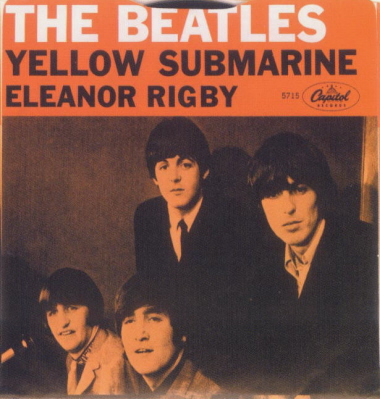 Making sure there was a song designated for Ringo to sing on a Beatles album had become a much more serious undertaking as the group entered into the second half of their career. Instead of satisfying this need by offering a half-baked original song or by resurrecting a favorite cover version, John and Paul took to penning material especially suited to their drummer's abilities, allowing him to shine. Such was the case with “Yellow Submarine” in 1966 and, to even greater effect, 1967’s offering "With A Little Help From My Friends." Making sure there was a song designated for Ringo to sing on a Beatles album had become a much more serious undertaking as the group entered into the second half of their career. Instead of satisfying this need by offering a half-baked original song or by resurrecting a favorite cover version, John and Paul took to penning material especially suited to their drummer's abilities, allowing him to shine. Such was the case with “Yellow Submarine” in 1966 and, to even greater effect, 1967’s offering "With A Little Help From My Friends."
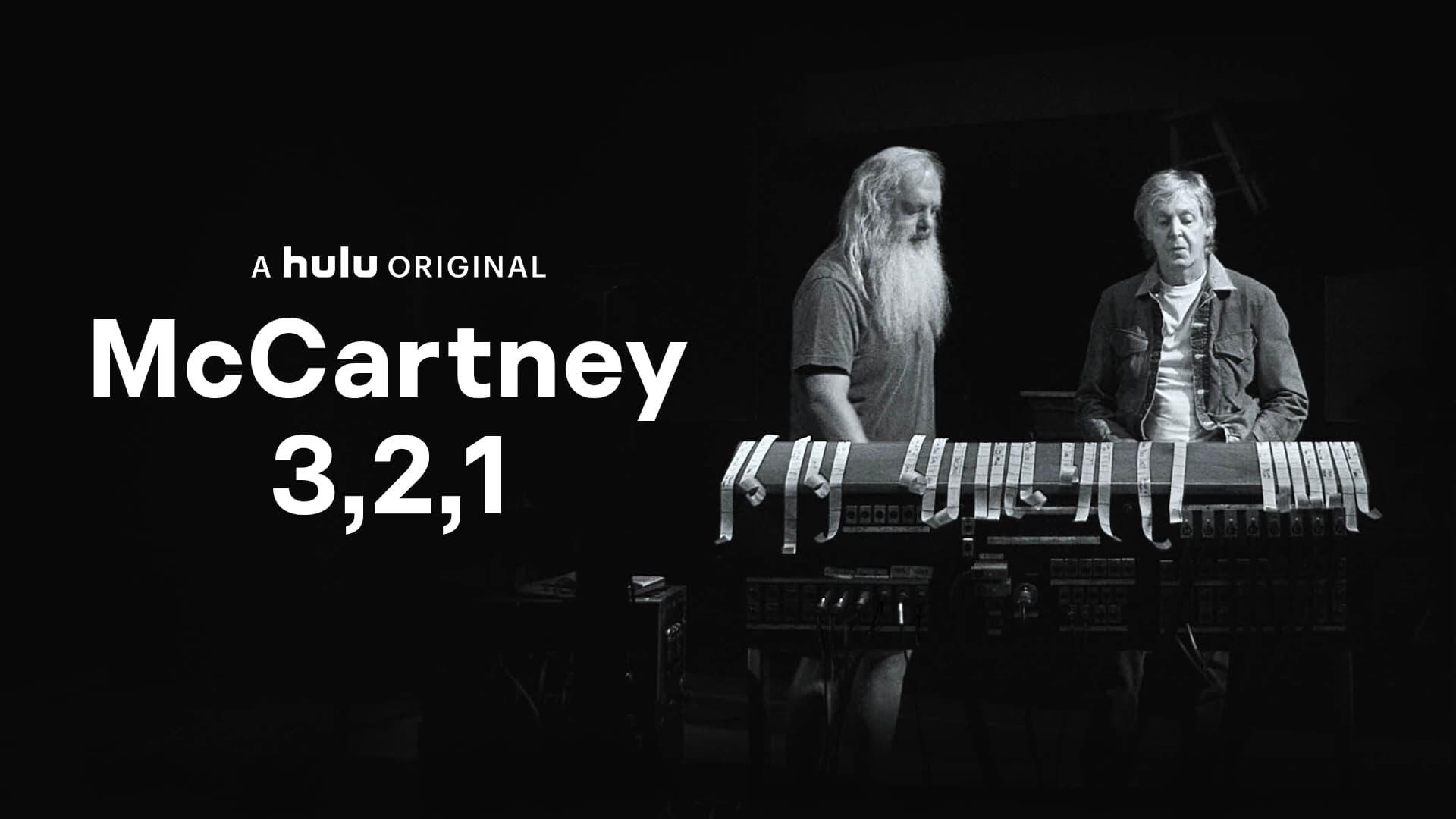 "We wanted a Ringo song on our albums 'cause he had millions of fans," Paul stated in his 2021 Hulu series "McCartney 3,2,1." He adds,"They always wanted to hear a Ringo song, and in the early days he did covers, such as a country song called "Act Naturally," which is great, very, very Ringo. But we said (for 'Sgt. Pepper,'), 'well listen, wait, we can write one!'" "We wanted a Ringo song on our albums 'cause he had millions of fans," Paul stated in his 2021 Hulu series "McCartney 3,2,1." He adds,"They always wanted to hear a Ringo song, and in the early days he did covers, such as a country song called "Act Naturally," which is great, very, very Ringo. But we said (for 'Sgt. Pepper,'), 'well listen, wait, we can write one!'"
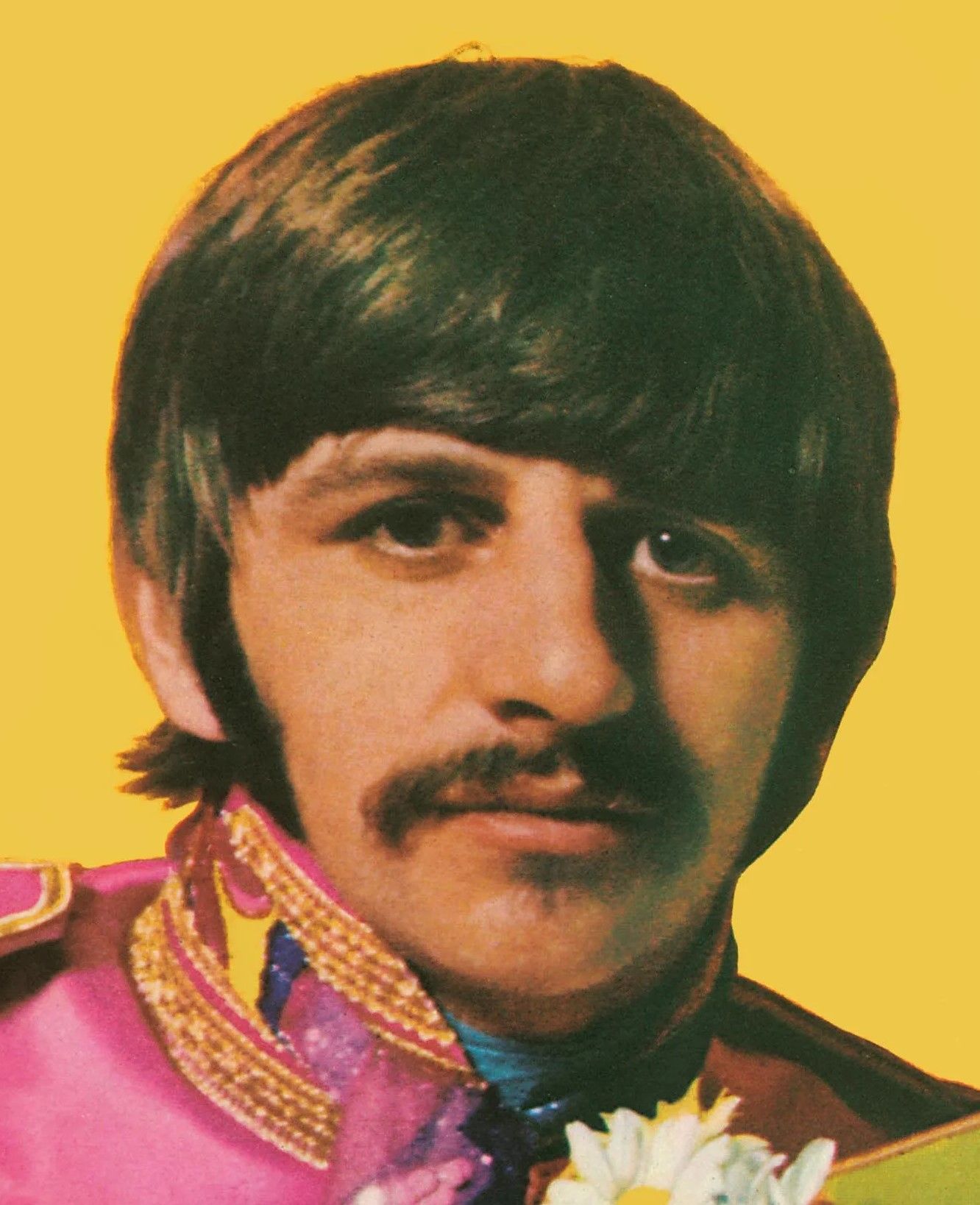 In keeping with his idea of creating an alter-ego group to take on the identity of, Paul went to great pains in humbly allowing Ringo to take center stage as the pop idol/star of the band – his character the only one (apart from Sgt. Pepper himself) to be identified by name. Christening him “Billy Shears,” Ringo steps directly into the limelight as never before, all the while acknowledging that his position in center stage is due to much “help” from his good “friends.” In keeping with his idea of creating an alter-ego group to take on the identity of, Paul went to great pains in humbly allowing Ringo to take center stage as the pop idol/star of the band – his character the only one (apart from Sgt. Pepper himself) to be identified by name. Christening him “Billy Shears,” Ringo steps directly into the limelight as never before, all the while acknowledging that his position in center stage is due to much “help” from his good “friends.”
 Arguably the most popular of all of the Ringo vocal tracks in The Beatles discography, the lyrics epitomize perfectly the personal character of the singer. There is little wonder, therefore, why this great track has become a career favorite wherever and whenever he chooses to perform. Arguably the most popular of all of the Ringo vocal tracks in The Beatles discography, the lyrics epitomize perfectly the personal character of the singer. There is little wonder, therefore, why this great track has become a career favorite wherever and whenever he chooses to perform.
Songwriting History
 With pressure from EMI to finish up the “Sgt. Pepper” album, having spent four months in the studio so far, Paul and John set out to finally write the “Billy Shears” song that Ringo was to sing. It may come as a surprise to many that the “Sgt. Pepper” theme song was composed and, for all intents and purposes, completely recorded by March 6th, 1967 but they had yet to even begin composing the song that it was to segue into. Having already introduced “the one and only Billy Shears,” they finally got around to writing Billy’s song on March 28th of that year. With pressure from EMI to finish up the “Sgt. Pepper” album, having spent four months in the studio so far, Paul and John set out to finally write the “Billy Shears” song that Ringo was to sing. It may come as a surprise to many that the “Sgt. Pepper” theme song was composed and, for all intents and purposes, completely recorded by March 6th, 1967 but they had yet to even begin composing the song that it was to segue into. Having already introduced “the one and only Billy Shears,” they finally got around to writing Billy’s song on March 28th of that year.
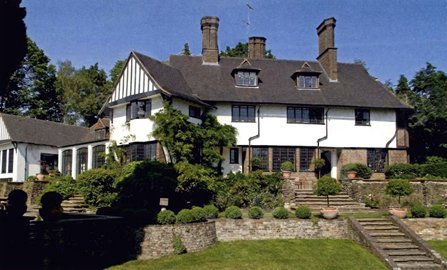 In actuality, it took two writing sessions to work on the song, and even then it wasn’t complete but had to be finished off in the studio while they recorded it. McCartney, in his 1997 book “Many Years From Now,” relates about the first writing session he and John had for the song on March 28th. “This was written out at John’s house in Weybridge for Ringo; we always liked to do one for him and it had to be not too much like our style. I think that was probably the best of the songs we wrote for Ringo actually. He was to be a character in this operetta, this whole thing that we were doing, so this gave him a good intro, wherever he came in the album; in fact it was the second track. It was a nice place for him, but wherever it came, it gave us an intro.” Hunter Davies, the group’s official biographer, recalls: "They knew it would be for the kids, a sing-a-long type of song. They thought the album was missing this sort of thing." In actuality, it took two writing sessions to work on the song, and even then it wasn’t complete but had to be finished off in the studio while they recorded it. McCartney, in his 1997 book “Many Years From Now,” relates about the first writing session he and John had for the song on March 28th. “This was written out at John’s house in Weybridge for Ringo; we always liked to do one for him and it had to be not too much like our style. I think that was probably the best of the songs we wrote for Ringo actually. He was to be a character in this operetta, this whole thing that we were doing, so this gave him a good intro, wherever he came in the album; in fact it was the second track. It was a nice place for him, but wherever it came, it gave us an intro.” Hunter Davies, the group’s official biographer, recalls: "They knew it would be for the kids, a sing-a-long type of song. They thought the album was missing this sort of thing."
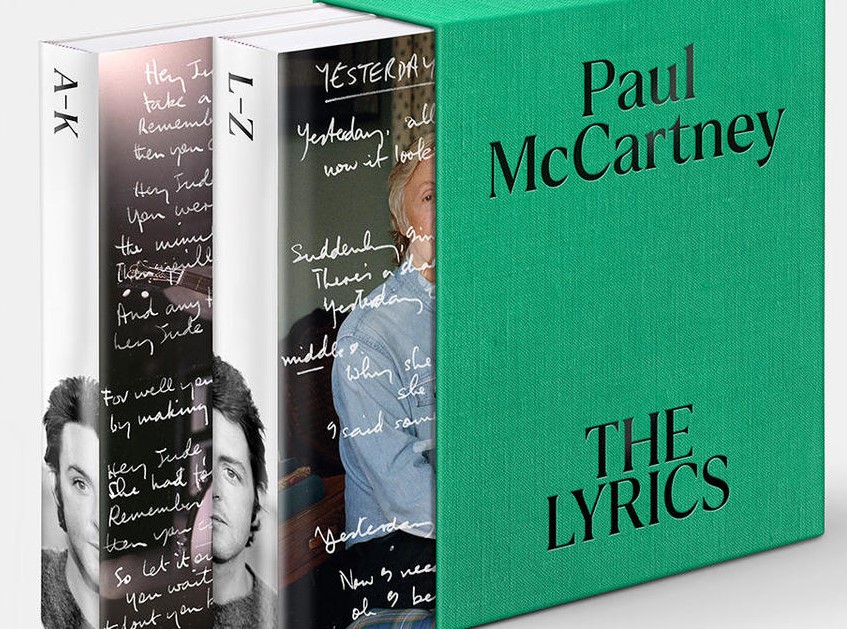 In his 2021 book "The Lyrics," Paul recalls the writing of the song. "Poking a little fun at Ringo was actually a lot of fun. 'What would you do if I sang out of tune?' Actually, John and I wrote this song within a vocal range that would cause no problems for Ringo, who had a style of singing different to ours. We tailored it especially for him, and I think that's one reason why the song was such a great success for him on 'Sgt. Pepper.'...Billy Shears showed up, large as life, in the guise of Ringo Starr! So, this song is Ringo's intro as a character in this operetta." In his 2021 book "The Lyrics," Paul recalls the writing of the song. "Poking a little fun at Ringo was actually a lot of fun. 'What would you do if I sang out of tune?' Actually, John and I wrote this song within a vocal range that would cause no problems for Ringo, who had a style of singing different to ours. We tailored it especially for him, and I think that's one reason why the song was such a great success for him on 'Sgt. Pepper.'...Billy Shears showed up, large as life, in the guise of Ringo Starr! So, this song is Ringo's intro as a character in this operetta."
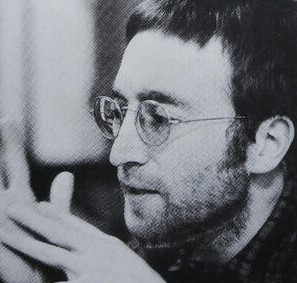 “Paul had the line about ‘with a little help from my friends,’” explained Lennon in 1970. “He had some kind of structure for it – and we wrote it pretty well fifty/fifty based on his original idea.” Paul agrees: “It was pretty much co-written, John and I doing a work song for Ringo, a little craft job. I always saw those as the equivalent of writing a James Bond film theme. It was a challenge, it was something out of the ordinary for us because we actually had to write in a key for Ringo and you had to be a little tongue in cheek. Ringo liked kids a lot, he was very good with kids so we knew ‘Yellow Submarine’ would be a good thing for Ringo to sing. In this case, it was a slightly more mature song, which I always liked very much.” “Paul had the line about ‘with a little help from my friends,’” explained Lennon in 1970. “He had some kind of structure for it – and we wrote it pretty well fifty/fifty based on his original idea.” Paul agrees: “It was pretty much co-written, John and I doing a work song for Ringo, a little craft job. I always saw those as the equivalent of writing a James Bond film theme. It was a challenge, it was something out of the ordinary for us because we actually had to write in a key for Ringo and you had to be a little tongue in cheek. Ringo liked kids a lot, he was very good with kids so we knew ‘Yellow Submarine’ would be a good thing for Ringo to sing. In this case, it was a slightly more mature song, which I always liked very much.”
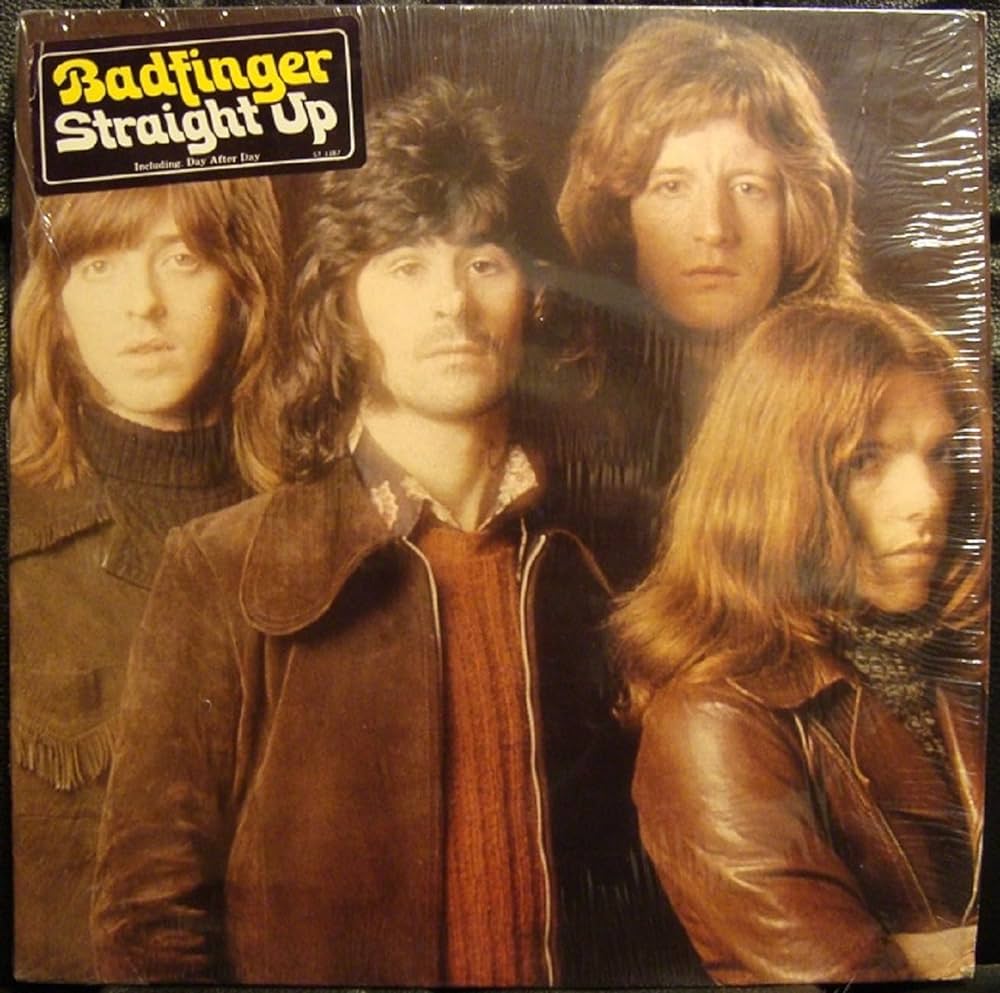 It can be assumed that Lennon had a part in writing at least some of the melody on this day since the working title of the song was “Bad Finger Boogie,” this name reportedly referring to John playing the melody on the piano using his middle finger instead of an injured forefinger. The original lyric sheet (shown above) titles the song "A Little Help From My Friends (Bad Finger Boogie)." Two years later, this title was remembered when coming up with a new name for the Apple band Badfinger. It can be assumed that Lennon had a part in writing at least some of the melody on this day since the working title of the song was “Bad Finger Boogie,” this name reportedly referring to John playing the melody on the piano using his middle finger instead of an injured forefinger. The original lyric sheet (shown above) titles the song "A Little Help From My Friends (Bad Finger Boogie)." Two years later, this title was remembered when coming up with a new name for the Apple band Badfinger.
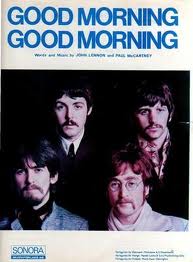 They apparently didn’t get very much done on this first day, attending a recording session that evening to add overdubs to two John Lennon dominated songs “Good Morning Good Morning” and “Being For The Benefit Of Mr. Kite.” This is attested to by Hunter Davies who was privileged to be present during the second writing session for this song on the next day, March 29th, 1967. In his book "The Beatles: The Authorized Biography," the author recounts what he witnessed: “They’d already established the (melody) the previous afternoon, a gentle lilting tune, and its name, ‘With A Little Help From My Friends.’ Now they were trying to polish up the melody and think of some words to go with it.” They apparently didn’t get very much done on this first day, attending a recording session that evening to add overdubs to two John Lennon dominated songs “Good Morning Good Morning” and “Being For The Benefit Of Mr. Kite.” This is attested to by Hunter Davies who was privileged to be present during the second writing session for this song on the next day, March 29th, 1967. In his book "The Beatles: The Authorized Biography," the author recounts what he witnessed: “They’d already established the (melody) the previous afternoon, a gentle lilting tune, and its name, ‘With A Little Help From My Friends.’ Now they were trying to polish up the melody and think of some words to go with it.”
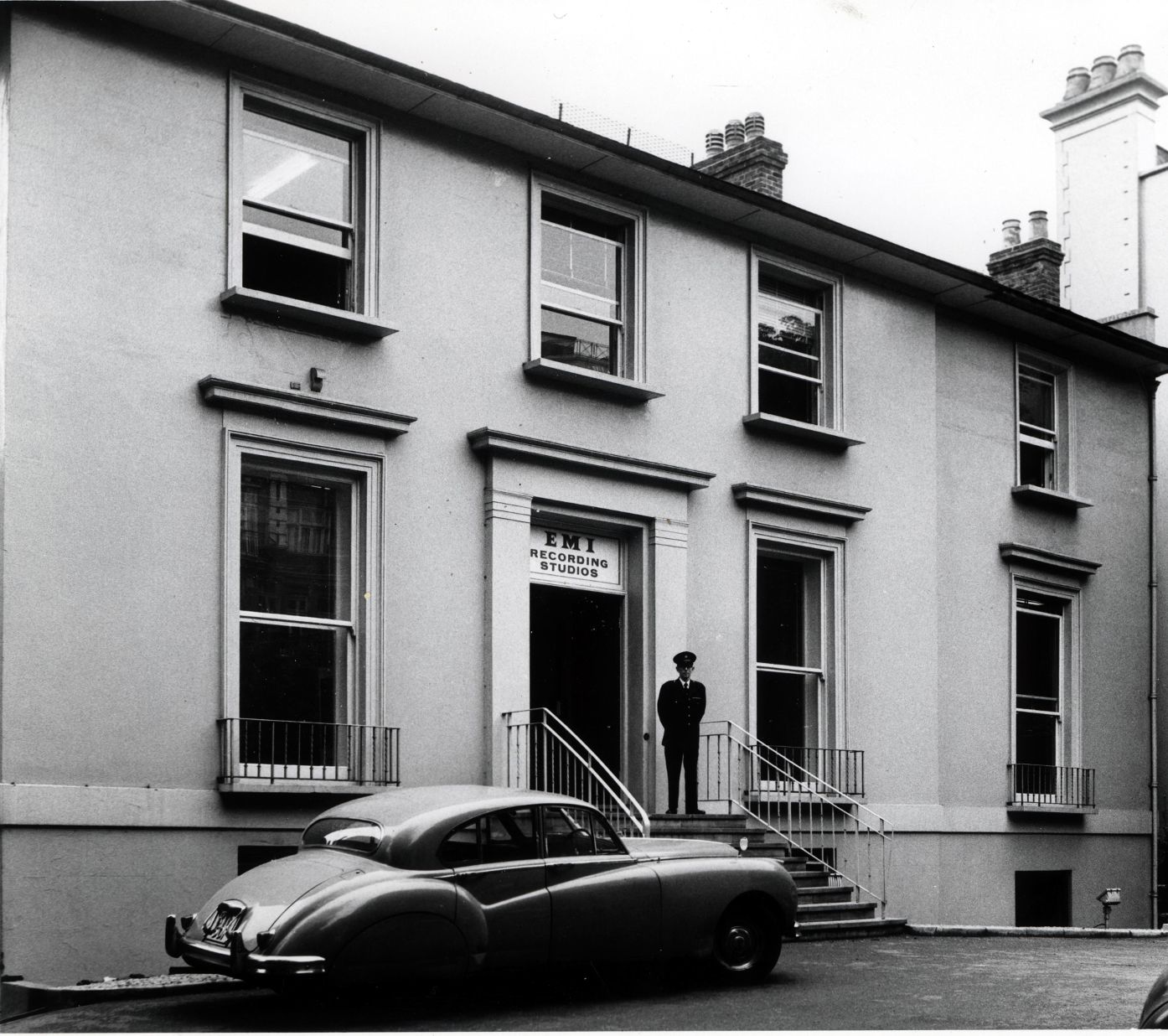 The events of this session that Hunter Davies relates in his book are extremely detailed, highlights of which will be related here. One thing that can be said, after reading Hunter Davies’ first-hand account, is that the pressure from EMI to complete the album didn’t seem to phase the lackadaisical approach that John and Paul took to completing the song. The events of this session that Hunter Davies relates in his book are extremely detailed, highlights of which will be related here. One thing that can be said, after reading Hunter Davies’ first-hand account, is that the pressure from EMI to complete the album didn’t seem to phase the lackadaisical approach that John and Paul took to completing the song.
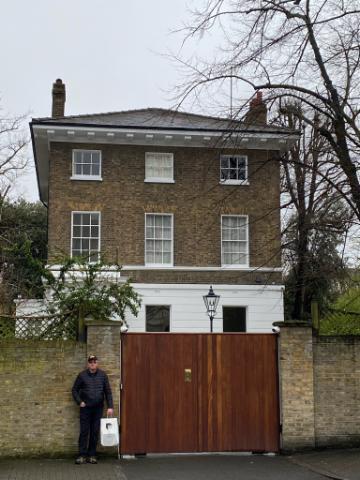 “At two o-clock in the afternoon John arrived at Paul’s house in St. John’s Wood,” Hunter Davies continues. “They both went up to Paul’s workroom at the top of the house. It is a narrow, rectangular room, full of stereophonic equipment and amplifiers…John started playing his guitar and Paul started banging on his piano. For a couple of hours they both banged away. Each seemed to be in a trance until the other came up with something good, then he would pluck it out of a mass of noises and try it himself.” “At two o-clock in the afternoon John arrived at Paul’s house in St. John’s Wood,” Hunter Davies continues. “They both went up to Paul’s workroom at the top of the house. It is a narrow, rectangular room, full of stereophonic equipment and amplifiers…John started playing his guitar and Paul started banging on his piano. For a couple of hours they both banged away. Each seemed to be in a trance until the other came up with something good, then he would pluck it out of a mass of noises and try it himself.”
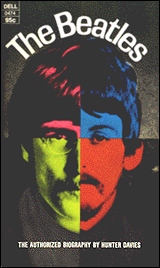 "’Are you afraid when you turn out the light,’ sang John," Hunter Davies states in his biography "The Beatles." "Paul sang it after him and nodded that it was good. John said they could use that idea for all the verses, if they could think of some more questions on those lines. ‘Do you believe in love at first sight,’ sang John. ‘No,’ he said, stopping singing. ‘It hasn’t got the right number of syllables. What do you think? Can we split it up and put in a pause to give it an extra syllable?’ John then sang the line, breaking it in the middle: ‘Do you believe – ugh – in love at first sight.’ ‘How about,’ said Paul, ‘Do you believe in a love at first sight?’ John sang it over and accepted it. In singing it, he added the next line, ‘Yes, I’m certain it happens all the time.’…John found himself singing ‘Would you believe,’ which he thought was better.” "’Are you afraid when you turn out the light,’ sang John," Hunter Davies states in his biography "The Beatles." "Paul sang it after him and nodded that it was good. John said they could use that idea for all the verses, if they could think of some more questions on those lines. ‘Do you believe in love at first sight,’ sang John. ‘No,’ he said, stopping singing. ‘It hasn’t got the right number of syllables. What do you think? Can we split it up and put in a pause to give it an extra syllable?’ John then sang the line, breaking it in the middle: ‘Do you believe – ugh – in love at first sight.’ ‘How about,’ said Paul, ‘Do you believe in a love at first sight?’ John sang it over and accepted it. In singing it, he added the next line, ‘Yes, I’m certain it happens all the time.’…John found himself singing ‘Would you believe,’ which he thought was better.”
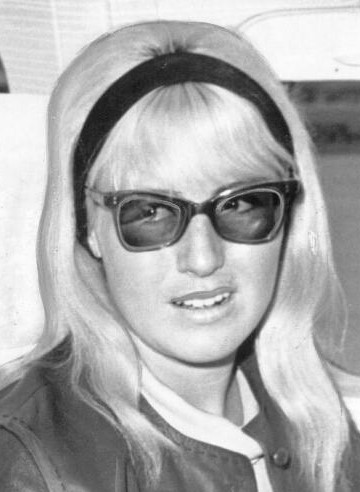 “It was now about five o’clock. Cynthia (Lennon), John’s wife, arrived wearing sunglasses, accompanied by Terry Doran, one of their old Liverpool friends. John and Paul kept on playing. (They) were singing their three lines over and over again, searching for a fourth. ‘What’s a rhyme for time?’ said John. ‘Yes, I’m certain it happens all the time. It’s got to rhyme with that line.’ ‘How about, I just feel fine,’ suggested Cyn. ‘No,’ said John. ‘You never use the work 'just.' It’s meaningless. It’s a fill-in word.’ John sang ‘I know it’s mine,’ but nobody took much notice. It didn’t make much sense, coming after ‘Are you afraid when you turn out the light.’ Somebody said it sounded obscene.” “It was now about five o’clock. Cynthia (Lennon), John’s wife, arrived wearing sunglasses, accompanied by Terry Doran, one of their old Liverpool friends. John and Paul kept on playing. (They) were singing their three lines over and over again, searching for a fourth. ‘What’s a rhyme for time?’ said John. ‘Yes, I’m certain it happens all the time. It’s got to rhyme with that line.’ ‘How about, I just feel fine,’ suggested Cyn. ‘No,’ said John. ‘You never use the work 'just.' It’s meaningless. It’s a fill-in word.’ John sang ‘I know it’s mine,’ but nobody took much notice. It didn’t make much sense, coming after ‘Are you afraid when you turn out the light.’ Somebody said it sounded obscene.”
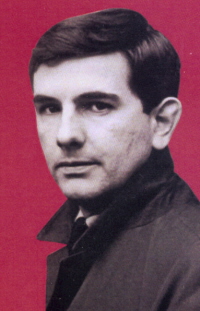 After John and Paul distracted themselves with some impromptu versions of “Can’t Buy Me Love” and “Tequila,” they suddenly got back to the task at hand. Hunter Davies continues: “’What do you see when you turn out the light,’ sang John, trying slightly new words to their existing line, leaving out ‘afraid.’ Then he followed it with another line, ‘I can’t tell you, but I know it’s mine.’ By slightly rewording it, he’d made it fit in. Paul said yes, that would do. He wrote down the finished four lines on a sheet of exercise paper propped up in front of him on his piano. They now had one whole verse, as well as the chorus.” After John and Paul distracted themselves with some impromptu versions of “Can’t Buy Me Love” and “Tequila,” they suddenly got back to the task at hand. Hunter Davies continues: “’What do you see when you turn out the light,’ sang John, trying slightly new words to their existing line, leaving out ‘afraid.’ Then he followed it with another line, ‘I can’t tell you, but I know it’s mine.’ By slightly rewording it, he’d made it fit in. Paul said yes, that would do. He wrote down the finished four lines on a sheet of exercise paper propped up in front of him on his piano. They now had one whole verse, as well as the chorus.”
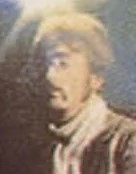 Paul relates: "I remember giggling with John as we wrote the lines ‘What do you see when you turn out the light? I can’t tell you but I know it’s mine.’ It could have been him playing with his willie under the covers, or it could have been taken on a deeper level; this was what it meant but it was a nice way to say it, a very non-specific way to say it. I always liked that." In his book "The Lyrics," Paul adds: "The line I liked best in it was, 'What do you see when you turn out the light?' I was imagining turning out the light when you're in bed, under the covers. You're talking about your genitals; that's what it is. Everyone does that: touching themselves when the light goes out. But I couldn't say, 'What do you see when you turn out the light: Your d*ck.' It just doesn't scan." Paul relates: "I remember giggling with John as we wrote the lines ‘What do you see when you turn out the light? I can’t tell you but I know it’s mine.’ It could have been him playing with his willie under the covers, or it could have been taken on a deeper level; this was what it meant but it was a nice way to say it, a very non-specific way to say it. I always liked that." In his book "The Lyrics," Paul adds: "The line I liked best in it was, 'What do you see when you turn out the light?' I was imagining turning out the light when you're in bed, under the covers. You're talking about your genitals; that's what it is. Everyone does that: touching themselves when the light goes out. But I couldn't say, 'What do you see when you turn out the light: Your d*ck.' It just doesn't scan."
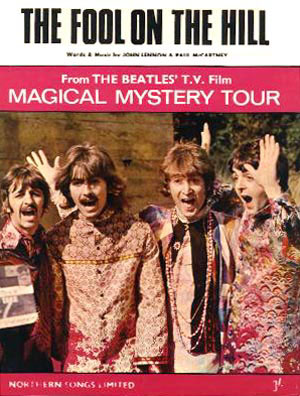 After more idle discussion, experimenting with a sitar, and Paul debuting his new composition “The Fool On The Hill” to John, the writing session ended for the day. “They then lit a marijuana cigarette, sharing it between them,” states Hunter Davies. “It was getting near seven o’clock, almost time to go round the corner to the EMI recording studios. They decided to ring Ringo, to tell him his song was finished – which it wasn’t – and that they would do it that evening.” After more idle discussion, experimenting with a sitar, and Paul debuting his new composition “The Fool On The Hill” to John, the writing session ended for the day. “They then lit a marijuana cigarette, sharing it between them,” states Hunter Davies. “It was getting near seven o’clock, almost time to go round the corner to the EMI recording studios. They decided to ring Ringo, to tell him his song was finished – which it wasn’t – and that they would do it that evening.”
 Since the entire lead vocal performance was recorded that evening, they had to have completed the lyrics right there in EMI Studio Two, including the opening verse. "They had one line that I wouldn’t sing,” Ringo remembers. “It was, ‘What would you do if I sang out of tune? Would you stand up and throw tomatoes at me?’ I said, ‘There’s not a chance in hell am I going to sing this line,’ because we still had lots of really deep memories of the kids throwing jelly beans and toys on stage; and I thought that if we ever did get out there again, I was not going to be bombarded with tomatoes." The original lyric sheet (shown above) has the lyric "throw a tomato at me" crossed out and replaced with "stand up and walk out on me," this change being jotted down at EMI Studios during the recording session that day. Other lyrical changes shown on the original lyric sheet include "I'll try not to go out of key," crossed out and replaced with "sing out of key," and "I'm certain that it happens every day" replaced with "happens all the time." Since the entire lead vocal performance was recorded that evening, they had to have completed the lyrics right there in EMI Studio Two, including the opening verse. "They had one line that I wouldn’t sing,” Ringo remembers. “It was, ‘What would you do if I sang out of tune? Would you stand up and throw tomatoes at me?’ I said, ‘There’s not a chance in hell am I going to sing this line,’ because we still had lots of really deep memories of the kids throwing jelly beans and toys on stage; and I thought that if we ever did get out there again, I was not going to be bombarded with tomatoes." The original lyric sheet (shown above) has the lyric "throw a tomato at me" crossed out and replaced with "stand up and walk out on me," this change being jotted down at EMI Studios during the recording session that day. Other lyrical changes shown on the original lyric sheet include "I'll try not to go out of key," crossed out and replaced with "sing out of key," and "I'm certain that it happens every day" replaced with "happens all the time."
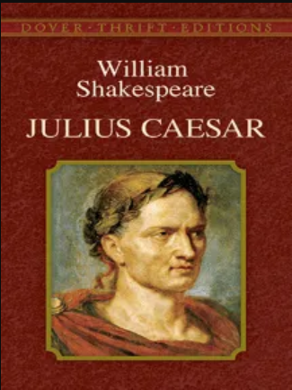 In his book "The Lyrics," Paul further dissects the lyrics. "'Lend me your ears' - well, you know where that's from. The Bard's four hundrendth birthday had fallen in April 1964, and there's been a production of 'Julius Caesar' on television that year. It was still fresh in our minds. John and I were able to include one or two little private jokes here: 'I get high with a little help from my friends.'...Later it became something of a subversive song in the US because Spiro Agnew, vice president of the US at the time, tried to ban it, claiming it encouraged drug use." In his book "The Lyrics," Paul further dissects the lyrics. "'Lend me your ears' - well, you know where that's from. The Bard's four hundrendth birthday had fallen in April 1964, and there's been a production of 'Julius Caesar' on television that year. It was still fresh in our minds. John and I were able to include one or two little private jokes here: 'I get high with a little help from my friends.'...Later it became something of a subversive song in the US because Spiro Agnew, vice president of the US at the time, tried to ban it, claiming it encouraged drug use."
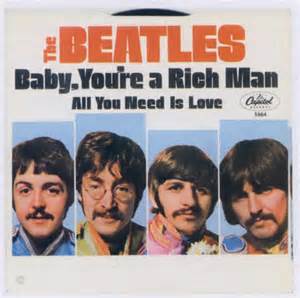 Interestingly, Lennon appeared to distance himself somewhat from being invoived in writing this song in his 1980 Playboy interview. “Paul with a little help from me,” he quipped. “I did some of the lyrics and all those little licks going on in the background from the second voice.” However, his creative wit comes through during the question/answer segments of the song, a tactic he reprised in “Baby, You’re A Rich Man” a little bit later that same year. Interestingly, Lennon appeared to distance himself somewhat from being invoived in writing this song in his 1980 Playboy interview. “Paul with a little help from me,” he quipped. “I did some of the lyrics and all those little licks going on in the background from the second voice.” However, his creative wit comes through during the question/answer segments of the song, a tactic he reprised in “Baby, You’re A Rich Man” a little bit later that same year.
Recording History
 That evening session on March 29th, 1967 at EMI Studio Two debuted what was to be the final composition to be included on the “Sgt. Pepper” album, namely “With A Little Help From My Friends.” They may not have gotten the song completely written, but it was crunch time to wrap up the album, or so claimed EMI. Therefore, they put their heads together to finish up the lyrics as well as the arrangement and get the recording of the song under way. That evening session on March 29th, 1967 at EMI Studio Two debuted what was to be the final composition to be included on the “Sgt. Pepper” album, namely “With A Little Help From My Friends.” They may not have gotten the song completely written, but it was crunch time to wrap up the album, or so claimed EMI. Therefore, they put their heads together to finish up the lyrics as well as the arrangement and get the recording of the song under way.
 Records indicate that the recording session began at 7 pm that evening but, as engineer Geoff Emerick details in his book “Here, There And Everywhere,” The Beatles didn’t arrive right at that time. Geoff Emerick explains their delay by saying they were busy “overseeing preparations for the upcoming album cover photo shoot.” However, as explained above by eyewitness Hunter Davies, they were busy at Paul’s house writing the song just before they arrived at the studio on that day, the photo shoot not occurring until the following day. At any rate, there was work for the EMI staff to do while they waited for the musicians to arrive. Geoff Emerick explains: “George Martin, Richard (Lush) and I filled the time by dubbing on the sound effects tapes that had been previously compiled for ‘Good Morning Good Morning’ and ‘Being For The Benefit Of Mr. Kite.’” Records indicate that the recording session began at 7 pm that evening but, as engineer Geoff Emerick details in his book “Here, There And Everywhere,” The Beatles didn’t arrive right at that time. Geoff Emerick explains their delay by saying they were busy “overseeing preparations for the upcoming album cover photo shoot.” However, as explained above by eyewitness Hunter Davies, they were busy at Paul’s house writing the song just before they arrived at the studio on that day, the photo shoot not occurring until the following day. At any rate, there was work for the EMI staff to do while they waited for the musicians to arrive. Geoff Emerick explains: “George Martin, Richard (Lush) and I filled the time by dubbing on the sound effects tapes that had been previously compiled for ‘Good Morning Good Morning’ and ‘Being For The Benefit Of Mr. Kite.’”
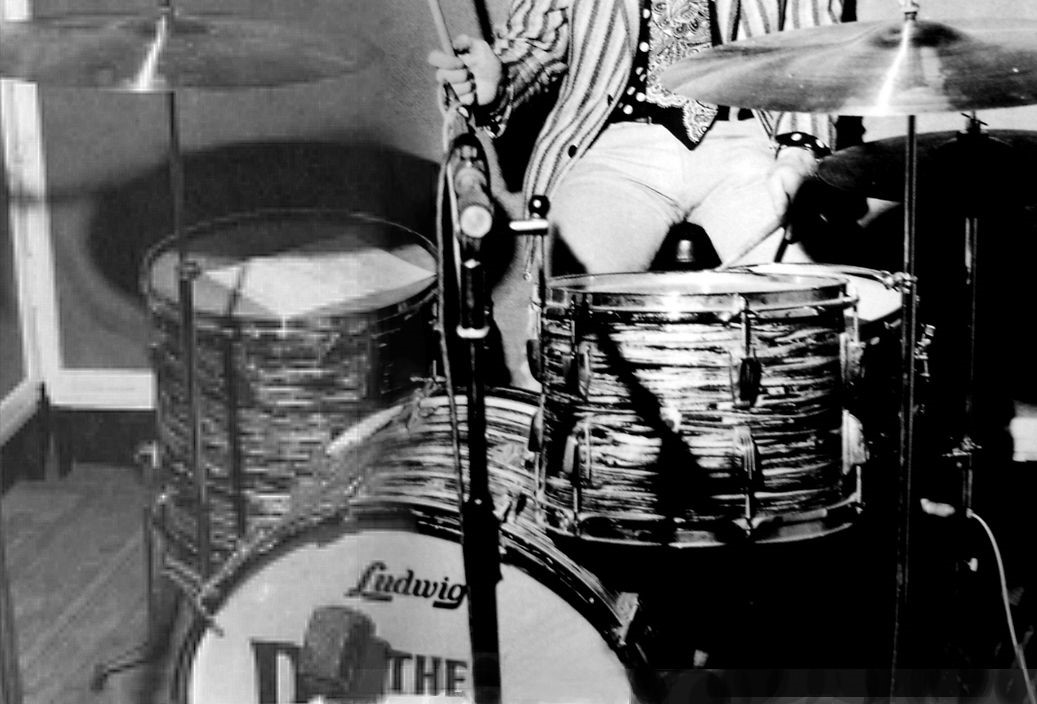 “Despite the late hour,” adds Geoff Emerick, “all four Beatles were wide awake...After hurriedly consumed cups of tea, we finally got to work. The backing track for the new song had a real spark to it, and an inspired Ringo was really smacking his tom-toms, so I decided to take the bottom skins off again – something I hadn’t done since ‘A Day In The Life.’” Ten takes were required to get one that was considered a "keeper." “Despite the late hour,” adds Geoff Emerick, “all four Beatles were wide awake...After hurriedly consumed cups of tea, we finally got to work. The backing track for the new song had a real spark to it, and an inspired Ringo was really smacking his tom-toms, so I decided to take the bottom skins off again – something I hadn’t done since ‘A Day In The Life.’” Ten takes were required to get one that was considered a "keeper."
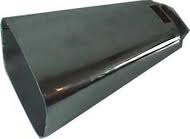 The instrumentation on these ten takes of this rhythm track consisted of Paul on piano, John on cowbell (both of which are barely discernible in the finished song), George Harrison on electric guitar and Ringo on drums. There weren't any vocals recorded at this point. One other musician heard on the rhythm track, however, is producer George Martin who plays a Hammond organ piece during the beginning three measures – the opening piece that would later prove to be the segue between the “Sgt. Pepper” theme and this song that was to include the introductory “Bil-ly Shears!" The instrumentation on these ten takes of this rhythm track consisted of Paul on piano, John on cowbell (both of which are barely discernible in the finished song), George Harrison on electric guitar and Ringo on drums. There weren't any vocals recorded at this point. One other musician heard on the rhythm track, however, is producer George Martin who plays a Hammond organ piece during the beginning three measures – the opening piece that would later prove to be the segue between the “Sgt. Pepper” theme and this song that was to include the introductory “Bil-ly Shears!"
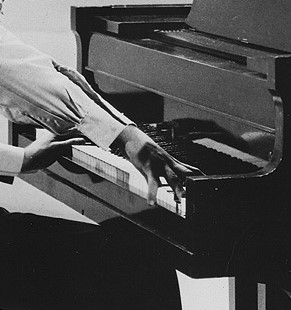 Both "take one" and "take two" can be heard on the 50th Anniversary releases of the "Sgt. Pepper" album. "Take one" was a false start which, with the tape still rolling, moves directly into "take two," which was complete. We see by listening to this early take that they already had it nearly perfected, with the exception of Harrison's guitar being just slightly out of tune. One interesting feature is Paul's thumb roll on the piano at the end of the third verse which, if used on the finished product, would have been a nice touch. Both "take one" and "take two" can be heard on the 50th Anniversary releases of the "Sgt. Pepper" album. "Take one" was a false start which, with the tape still rolling, moves directly into "take two," which was complete. We see by listening to this early take that they already had it nearly perfected, with the exception of Harrison's guitar being just slightly out of tune. One interesting feature is Paul's thumb roll on the piano at the end of the third verse which, if used on the finished product, would have been a nice touch.
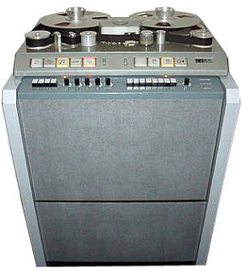 With all four of the four-track tape filled, a tape reduction was then made that condensed everything down to a single track in preparation for overdubs. Some hoped this recording session was done for the day. “It was nearly dawn by that time,” Geoff Emerick explains. “Richard (Lush) and I watched an exhausted Ringo begin to trudge up the stairs. That was our signal, as usual, that the session was over, and we began to relax. He was at the halfway point when we heard Paul’s voice call out.” With all four of the four-track tape filled, a tape reduction was then made that condensed everything down to a single track in preparation for overdubs. Some hoped this recording session was done for the day. “It was nearly dawn by that time,” Geoff Emerick explains. “Richard (Lush) and I watched an exhausted Ringo begin to trudge up the stairs. That was our signal, as usual, that the session was over, and we began to relax. He was at the halfway point when we heard Paul’s voice call out.”
 “’Where are you going, Ring?’ he said. Ringo looked surprised. ‘Home, to bed.’ ‘Nah, let’s do the vocal now.’ Ringo looked to the others for support. ‘But I’m knackered,’ he protested. To his dismay, both John and George Harrison were taking Paul’s side. ‘No, come on back here and do some singing for us,’ John said with a grin. It was always a group decision as to when a session would end, and obviously Ringo had jumped the gun a bit. Reluctantly, he headed back down the steps. ‘Oh no,’ groaned Richard. ‘Are we still going to be here when tomorrow’s session is due to start?’ Weary to the bone, all I could do was shake my head. I was too tired to even react.” “’Where are you going, Ring?’ he said. Ringo looked surprised. ‘Home, to bed.’ ‘Nah, let’s do the vocal now.’ Ringo looked to the others for support. ‘But I’m knackered,’ he protested. To his dismay, both John and George Harrison were taking Paul’s side. ‘No, come on back here and do some singing for us,’ John said with a grin. It was always a group decision as to when a session would end, and obviously Ringo had jumped the gun a bit. Reluctantly, he headed back down the steps. ‘Oh no,’ groaned Richard. ‘Are we still going to be here when tomorrow’s session is due to start?’ Weary to the bone, all I could do was shake my head. I was too tired to even react.”
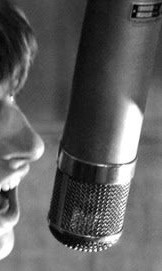 “Fortunately for all of us, Ringo got his lead vocal done relatively quickly: perhaps the shock tactic of having him sing when he was least expecting it took the nervousness away, or perhaps it was just how supportive everyone else was being. All three of his compatriots gathered around him, inches behind the microphone, silently conducting and cheering him on as he gamely tackled his vocal duties. It was a touching show of unity among the four Beatles.” In actuality, a slight amount of coaching did get picked up by the microphone as evidenced in the third refrain where someone (probably Paul) is heard cueing Ringo when the key word was “high” in the upcoming line. “Fortunately for all of us, Ringo got his lead vocal done relatively quickly: perhaps the shock tactic of having him sing when he was least expecting it took the nervousness away, or perhaps it was just how supportive everyone else was being. All three of his compatriots gathered around him, inches behind the microphone, silently conducting and cheering him on as he gamely tackled his vocal duties. It was a touching show of unity among the four Beatles.” In actuality, a slight amount of coaching did get picked up by the microphone as evidenced in the third refrain where someone (probably Paul) is heard cueing Ringo when the key word was “high” in the upcoming line.
 “The only problem,” Geoff Emerick remembers, “was the song’s last high note, which Ringo had a bit of trouble hitting spot-on. For a while he lobbied to have the tape slowed down just for that one drop-in, and we tried it, but even though it allowed him to sing on pitch, it didn’t match tonally to the rest of the vocal – he sounded a bit silly, almost like one of The Goons. ‘No, Ring, you’ve got to do it properly,’ Paul finally concluded. ‘It’s okay; just put your mind to it. You can do it,’ George Harrison said encouragingly. Even John added some helpful – if decidedly nontechnical – advice: ‘Just throw yer head back and let’er rip!’ It took a few tries, but Ringo finally hit the note, and held it, without too much wavering. Amid the cheers of his bandmates and a Scotch-and-Coke toast, the session finally ended.” It was now 5:45 am the following morning and Ringo was finally allowed to go home to bed. “The only problem,” Geoff Emerick remembers, “was the song’s last high note, which Ringo had a bit of trouble hitting spot-on. For a while he lobbied to have the tape slowed down just for that one drop-in, and we tried it, but even though it allowed him to sing on pitch, it didn’t match tonally to the rest of the vocal – he sounded a bit silly, almost like one of The Goons. ‘No, Ring, you’ve got to do it properly,’ Paul finally concluded. ‘It’s okay; just put your mind to it. You can do it,’ George Harrison said encouragingly. Even John added some helpful – if decidedly nontechnical – advice: ‘Just throw yer head back and let’er rip!’ It took a few tries, but Ringo finally hit the note, and held it, without too much wavering. Amid the cheers of his bandmates and a Scotch-and-Coke toast, the session finally ended.” It was now 5:45 am the following morning and Ringo was finally allowed to go home to bed.
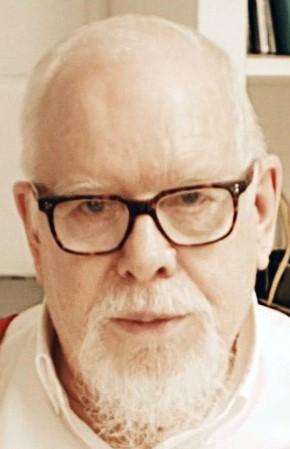 After a little bit of sleep, the group convened at Chelsea Manor Studios in London for the photo shoot that resulted in the “Sgt. Pepper” album cover, this resulting in Geoff Emerick’s recalling them “animatedly discussing the set that Peter Blake had built for them and talking about how much they all loved their satin Pepper costumes.” These discussions transpired this day, March 30th, 1967, at their next recording session in EMI Studio Two, this session not beginning until 11 pm. After a little bit of sleep, the group convened at Chelsea Manor Studios in London for the photo shoot that resulted in the “Sgt. Pepper” album cover, this resulting in Geoff Emerick’s recalling them “animatedly discussing the set that Peter Blake had built for them and talking about how much they all loved their satin Pepper costumes.” These discussions transpired this day, March 30th, 1967, at their next recording session in EMI Studio Two, this session not beginning until 11 pm.
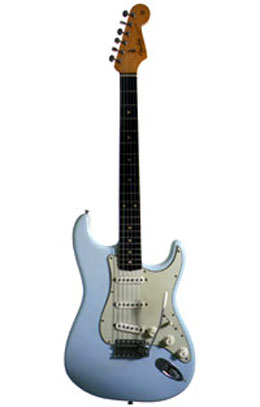 The recording session this day was consumed entirely by adding overdubs to “With A Little Help From My Friends” and thereby completing the song. Two sets of background vocals from John, Paul and George were overdubbed, the first set encompassing the question/answer lyrics that filled in the empty gaps in the verses purposely left by Ringo on the previous session, these being sung in unison by all three Beatles. Then, the three of them harmonized some of these lines as well as providing sporadic harmony vocals on top of Ringo’s vocal, this encompassing the second set of vocal overdubs. Ringo then added a tambourine overdub and George added two guitar overdubs, an additional rhythm guitar for the entire song and a lead guitar overdub which can be heard in two places: just before Ringo begins singing and just after the first refrain. “Ringo sat up in the control room with us for most of that session,” Geoff Emerick explains, “beaming like a proud papa. This was ‘his’ song and he was quite interested in its progress, listening intently to every new overdub." The recording session this day was consumed entirely by adding overdubs to “With A Little Help From My Friends” and thereby completing the song. Two sets of background vocals from John, Paul and George were overdubbed, the first set encompassing the question/answer lyrics that filled in the empty gaps in the verses purposely left by Ringo on the previous session, these being sung in unison by all three Beatles. Then, the three of them harmonized some of these lines as well as providing sporadic harmony vocals on top of Ringo’s vocal, this encompassing the second set of vocal overdubs. Ringo then added a tambourine overdub and George added two guitar overdubs, an additional rhythm guitar for the entire song and a lead guitar overdub which can be heard in two places: just before Ringo begins singing and just after the first refrain. “Ringo sat up in the control room with us for most of that session,” Geoff Emerick explains, “beaming like a proud papa. This was ‘his’ song and he was quite interested in its progress, listening intently to every new overdub."
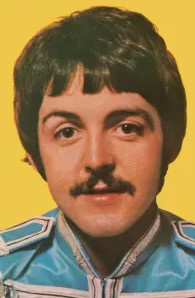 One final overdub was needed, as Geoff Emerick goes on to relate: "There was still no bass on it because Paul had played piano during the backing track. So at around three in the morning, John, George Harrison and Ringo finally headed home, accompanied by George Martin. Richard (Lush) and I again hunkered down for what we knew was going to be a long night…but it was worth every second of it. By this time, I knew exactly the kind of sound Paul was after, and I didn’t do anything differently than on other Pepper tracks, but I do think there’s something unique about the bass sound in ‘With A Little Help From My Friends.’ Perhaps it’s because Paul deviated from the usual routine in that he decided to sit up in the control room with us while he played; to accommodate his wishes, Richard (Lush) ran an extra-long lead down to the bass amp." One final overdub was needed, as Geoff Emerick goes on to relate: "There was still no bass on it because Paul had played piano during the backing track. So at around three in the morning, John, George Harrison and Ringo finally headed home, accompanied by George Martin. Richard (Lush) and I again hunkered down for what we knew was going to be a long night…but it was worth every second of it. By this time, I knew exactly the kind of sound Paul was after, and I didn’t do anything differently than on other Pepper tracks, but I do think there’s something unique about the bass sound in ‘With A Little Help From My Friends.’ Perhaps it’s because Paul deviated from the usual routine in that he decided to sit up in the control room with us while he played; to accommodate his wishes, Richard (Lush) ran an extra-long lead down to the bass amp."
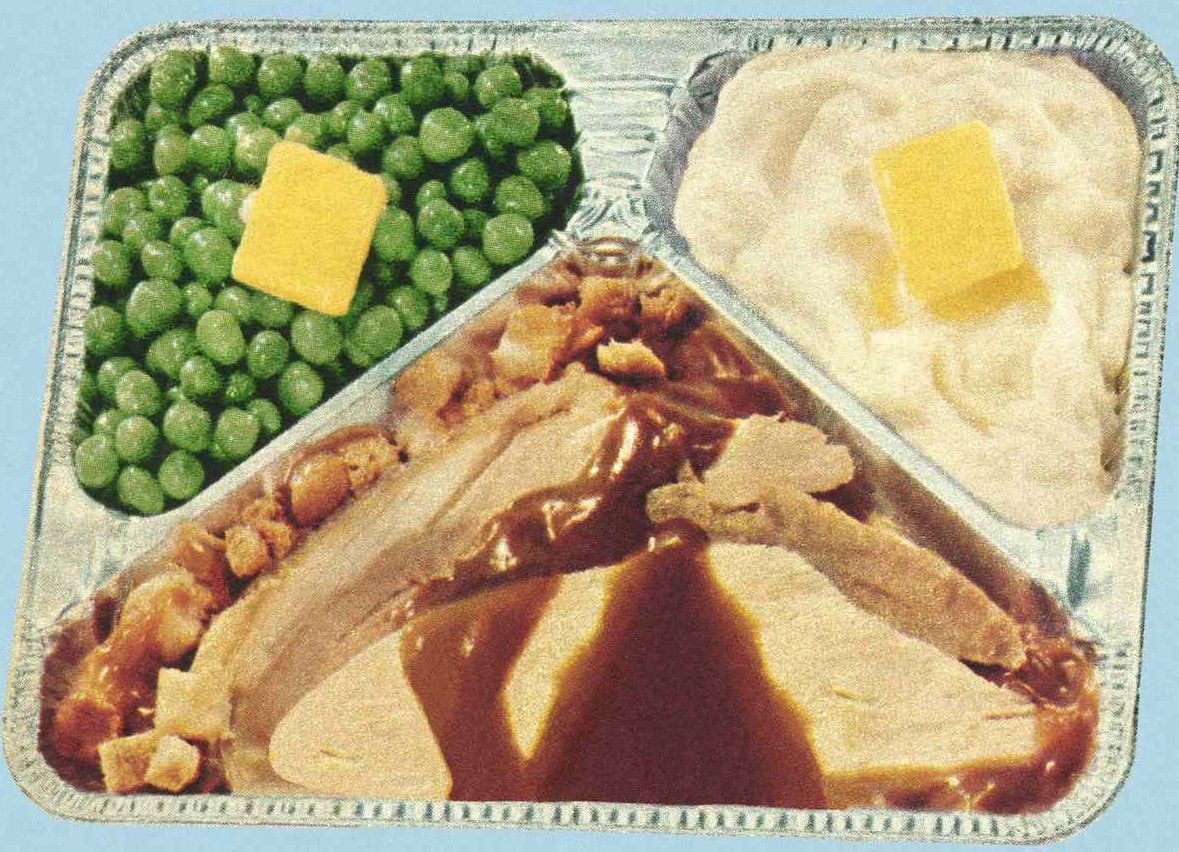 An interesting note here is that, although Geoff Emerick recounts that John, George and Ringo had left for the night by the time the bass was being recorded, photographic evidence displays multiple shots of all three Beatles watching on as Paul was rehearsing his bass performance on the studio floor. They sat around with nothing to contribute at this point, smoking cigarettes and consuming tea and what looks like TV dinners as well as looking somewhat bored. It appears that, since Paul was about to painstakingly record his bass part in the control room, they decided to go home and leave him to it. An interesting note here is that, although Geoff Emerick recounts that John, George and Ringo had left for the night by the time the bass was being recorded, photographic evidence displays multiple shots of all three Beatles watching on as Paul was rehearsing his bass performance on the studio floor. They sat around with nothing to contribute at this point, smoking cigarettes and consuming tea and what looks like TV dinners as well as looking somewhat bored. It appears that, since Paul was about to painstakingly record his bass part in the control room, they decided to go home and leave him to it.
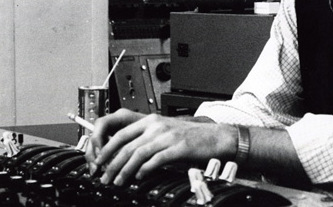 “Brow furrowed in deep concentration,” Geoff Emerick recalls, "fingers wrapped around his psychedelic colored Rickenbacker, McCartney instructed Richard (Lush) to drop in and out over and over again. Determined to get every single note and phrase as perfect as it could possibly be, that evening he was like a man possessed. Sitting side by side with the ultra-focused McCartney in that cramped control room in the middle of the night, shouting out encouragement every time he’d nail a section, Richard (Lush) and I truly felt privileged to be there. We knew that the work we were doing was important, though we could hardly guess at the seismic impact it would have on popular culture when Pepper was finally released a few months later." “Brow furrowed in deep concentration,” Geoff Emerick recalls, "fingers wrapped around his psychedelic colored Rickenbacker, McCartney instructed Richard (Lush) to drop in and out over and over again. Determined to get every single note and phrase as perfect as it could possibly be, that evening he was like a man possessed. Sitting side by side with the ultra-focused McCartney in that cramped control room in the middle of the night, shouting out encouragement every time he’d nail a section, Richard (Lush) and I truly felt privileged to be there. We knew that the work we were doing was important, though we could hardly guess at the seismic impact it would have on popular culture when Pepper was finally released a few months later."
 In Paul's 2021 Hulu series "McCartney 3,2,1," he explains the juxtaposition of his bass notes with the rhythm instruments recorded on the song thus far. "The bass is keeping it moving instead of...the rest is pretty straight. Well, that's the good thing you can do; that straight stuff and play off it. You need the straight stuff." Interviewer Rick Rubin thereby described Paul's bass contribution on this song as "lead bass." In Paul's 2021 Hulu series "McCartney 3,2,1," he explains the juxtaposition of his bass notes with the rhythm instruments recorded on the song thus far. "The bass is keeping it moving instead of...the rest is pretty straight. Well, that's the good thing you can do; that straight stuff and play off it. You need the straight stuff." Interviewer Rick Rubin thereby described Paul's bass contribution on this song as "lead bass."
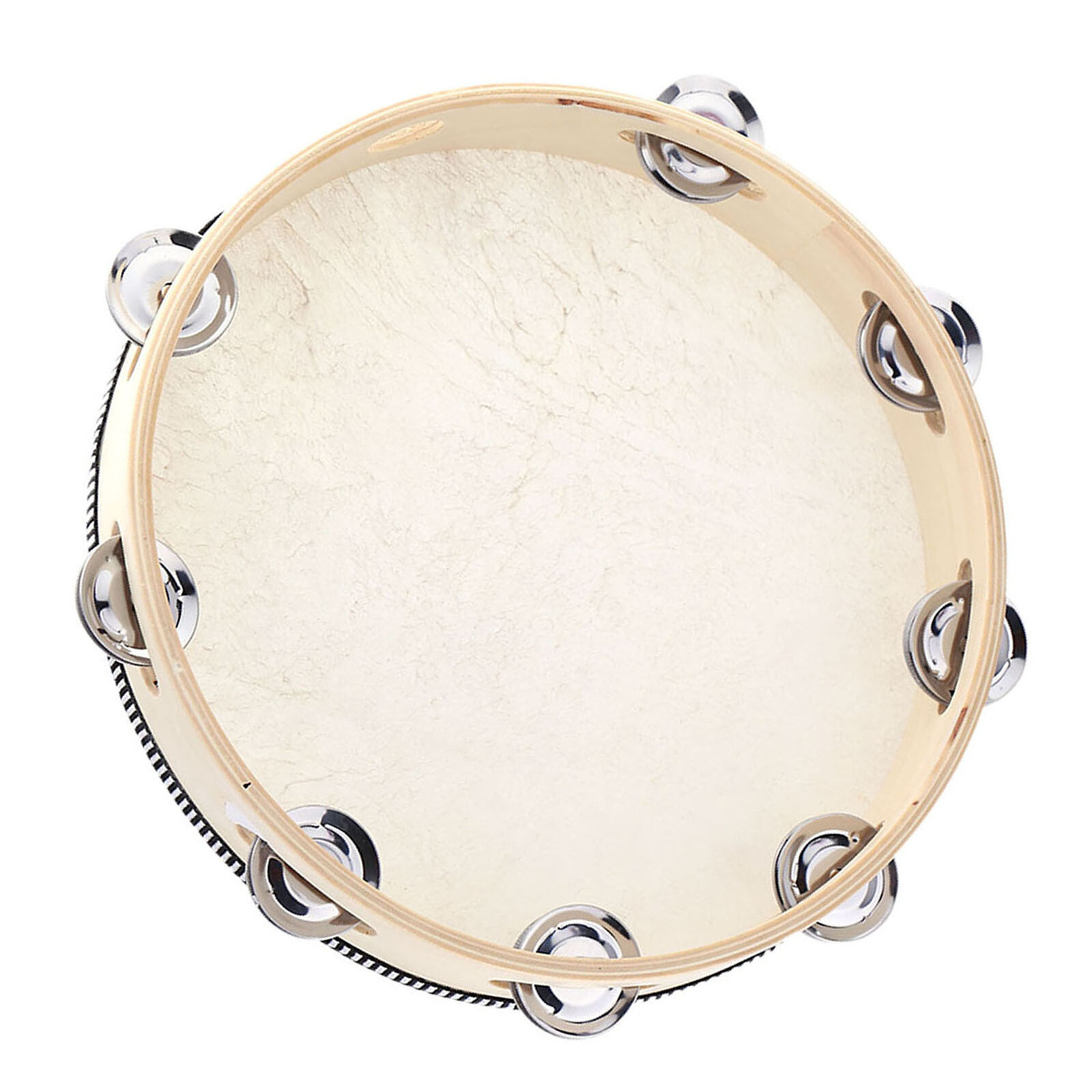 This bass guitar overdub, along with the tambourine and the later guitar overdub from George, ended up on track two of the master tape, while the backing vocal overdubs and opening guitar phrase wound up on tracks three and four. Finally, at 7:30 am the following day, the session, as well as the song, was complete. "The song was performed very much in the style of the 'Sgt. Pepper' album as a whole," Paul relates in his book "The Lyrics," "the style of a live show in which the song is sung by a certain 'Billy Shears.'" This bass guitar overdub, along with the tambourine and the later guitar overdub from George, ended up on track two of the master tape, while the backing vocal overdubs and opening guitar phrase wound up on tracks three and four. Finally, at 7:30 am the following day, the session, as well as the song, was complete. "The song was performed very much in the style of the 'Sgt. Pepper' album as a whole," Paul relates in his book "The Lyrics," "the style of a live show in which the song is sung by a certain 'Billy Shears.'"
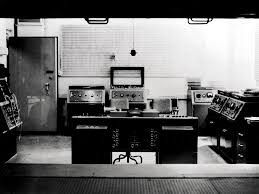 The mono mix of the song was made around twelve hours later, on March 31st, 1967, by George Martin, Geoff Emerick and Richard Lush in the EMI Studio Two control room. It took fifteen tries at this mono mix before everyone was satisfied, The Beatles included since they were reportedly very interested in the mono mixing of this album. The group was adamant about clipping the harmonized vocals at the very end of the song, making a tidy vocal delivery while the rest of the instruments came to a more natural ringing close. The mono mix of the song was made around twelve hours later, on March 31st, 1967, by George Martin, Geoff Emerick and Richard Lush in the EMI Studio Two control room. It took fifteen tries at this mono mix before everyone was satisfied, The Beatles included since they were reportedly very interested in the mono mixing of this album. The group was adamant about clipping the harmonized vocals at the very end of the song, making a tidy vocal delivery while the rest of the instruments came to a more natural ringing close.
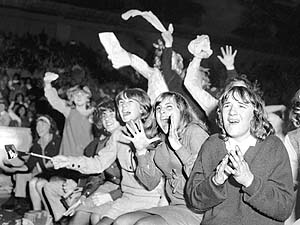 In order to adequately combine this song seamlessly with the preceding track, namely the “Sgt. Pepper” theme, a small section of crowd screaming from one of the band's Hollywood Bowl performances was added as an overdub for a proper crossfade between the two songs. This was created on April 6th, 1967 in the control room of EMI Studio Two by the same EMI staff members. The screaming, however, begins just slightly before the second song begins. In order to adequately combine this song seamlessly with the preceding track, namely the “Sgt. Pepper” theme, a small section of crowd screaming from one of the band's Hollywood Bowl performances was added as an overdub for a proper crossfade between the two songs. This was created on April 6th, 1967 in the control room of EMI Studio Two by the same EMI staff members. The screaming, however, begins just slightly before the second song begins.
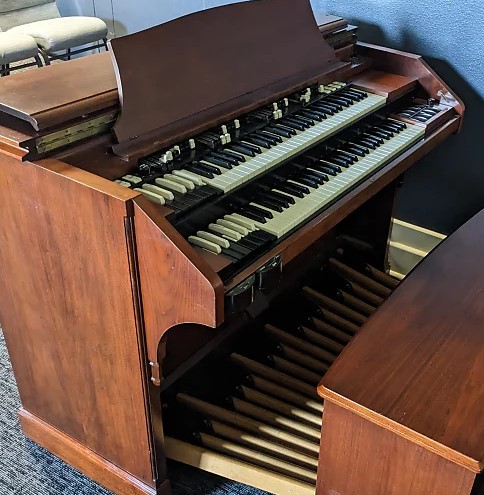 On the following day, April 7th, 1967, this same EMI team assembled to create the stereo mix of “With A Little Help From My Friends” as well as the stereo crossfade between the two opening songs of the album. As for the stereo mix, the rhythm track, lead vocals, George’s overdubbed rhythm guitar and opening lead guitar passage and George Martin’s Hammond organ intro were all centered in the mix. The bass guitar, tambourine and lead guitar passage at the end of the first refrain were all heard primarily in the right channel. The harmonized vocals are thereby panned primarily to the left channel. They were equally as careful to clip the harmonized vocals at the end as they did with the mono mix. As it turned out, the final fade-out is about a second shorter in the stereo mix than in the mono mix. As for the crossfade screaming fans, the roar of the crowd begins much earlier in the segue, the beginning impact mostly heard in the final four measures of the “Sgt. Pepper” theme. On the following day, April 7th, 1967, this same EMI team assembled to create the stereo mix of “With A Little Help From My Friends” as well as the stereo crossfade between the two opening songs of the album. As for the stereo mix, the rhythm track, lead vocals, George’s overdubbed rhythm guitar and opening lead guitar passage and George Martin’s Hammond organ intro were all centered in the mix. The bass guitar, tambourine and lead guitar passage at the end of the first refrain were all heard primarily in the right channel. The harmonized vocals are thereby panned primarily to the left channel. They were equally as careful to clip the harmonized vocals at the end as they did with the mono mix. As it turned out, the final fade-out is about a second shorter in the stereo mix than in the mono mix. As for the crossfade screaming fans, the roar of the crowd begins much earlier in the segue, the beginning impact mostly heard in the final four measures of the “Sgt. Pepper” theme.
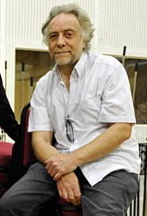 An additional stereo mix was then created in 1998 for the “Yellow Submarine Songtrack” album, this mix performed in EMI Studios by Peter Cobbin, Paul Hicks, Mirek Stiles and Allan Rouse. It differs greatly from the 1967 stereo mix, the most noteworthy difference being that the rhythm guitar overdub is panned entirely to the right channel which allows Paul’s piano to be heard a little more clearly in the left channel. The rhythm track, the bass and all of the vocals are centered in the mix while the tambourine and the first lead guitar passage are panned exclusively into the right channel. Interestingly, the second lead guitar passage is panned about three-quarters into the right channel. The clarity resulting here even allows John’s cowbell from the rhythm track to be heard a little more in the mix. An additional stereo mix was then created in 1998 for the “Yellow Submarine Songtrack” album, this mix performed in EMI Studios by Peter Cobbin, Paul Hicks, Mirek Stiles and Allan Rouse. It differs greatly from the 1967 stereo mix, the most noteworthy difference being that the rhythm guitar overdub is panned entirely to the right channel which allows Paul’s piano to be heard a little more clearly in the left channel. The rhythm track, the bass and all of the vocals are centered in the mix while the tambourine and the first lead guitar passage are panned exclusively into the right channel. Interestingly, the second lead guitar passage is panned about three-quarters into the right channel. The clarity resulting here even allows John’s cowbell from the rhythm track to be heard a little more in the mix.
 George Martin's son Giles Martin, along with engineer Sam Okell, returned to the original tapes of the song to create yet another stereo mix in preparation for the new 50th Anniversary editions of the "Sgt. Pepper" album. While the session tapes were in front of them, they also prepared a mix of "take one" and "take two" for inclusion as bonus tracks on editions of this re-release. George Martin's son Giles Martin, along with engineer Sam Okell, returned to the original tapes of the song to create yet another stereo mix in preparation for the new 50th Anniversary editions of the "Sgt. Pepper" album. While the session tapes were in front of them, they also prepared a mix of "take one" and "take two" for inclusion as bonus tracks on editions of this re-release.
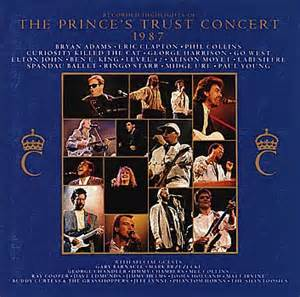 One concert recording of “With A Little Help From My Friends” was made on July 7th, 1987 by an all star band featuring Ringo on lead vocals and George Harrison on rhythm guitar for the Prince’s Trust 1987 Rock Gala. This recording appeared on the live album "The Prince’s Trust Concert 1987," which was released in various countries but not in the US. One concert recording of “With A Little Help From My Friends” was made on July 7th, 1987 by an all star band featuring Ringo on lead vocals and George Harrison on rhythm guitar for the Prince’s Trust 1987 Rock Gala. This recording appeared on the live album "The Prince’s Trust Concert 1987," which was released in various countries but not in the US.
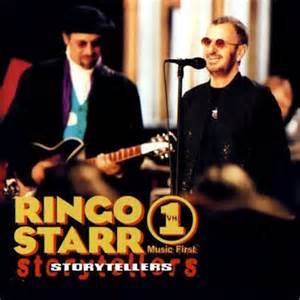 Many live recordings of the song were also made by Ringo’s “All Starr Band,” the first being done on September 3rd or 4th, 1989 at The Greek Theatre in Los Angeles, California, this appearing on the benefit album "Nobody's Child" as well as an accompanying single. Then there was the July 13th, 1992 version recorded in Montreux as heard on his “Live In Montreux” album. Then, on May 13th, 1998, two recordings of the song were made for the “VH1 Storytellers” album, the second being a short reprise of the song for the close of the television performance. Then, on August 22nd, 2001, a recording was made for his “King Biscuit Flower Hour Presents” album, this version also appearing on his albums “Extended Versions” and “Ringo Starr And Friends.” On July 24th, 2003, the song was recorded in Toronto, Canada for the album “Tour 2003,” and on June 24th, 2005, two versions of the song were recorded (opening and closing the show) in Waukegan, Illinois for his “Live At Soundstage” album. It was then recorded in Uncasville, Connecticut on July 16th, 2006 for his “Live 2006” album, followed by another dual recording on August 2nd, 2008 at the Greek Theatre in Los Angeles, California, for his “Live At The Greek Theatre 2008” album. Many live recordings of the song were also made by Ringo’s “All Starr Band,” the first being done on September 3rd or 4th, 1989 at The Greek Theatre in Los Angeles, California, this appearing on the benefit album "Nobody's Child" as well as an accompanying single. Then there was the July 13th, 1992 version recorded in Montreux as heard on his “Live In Montreux” album. Then, on May 13th, 1998, two recordings of the song were made for the “VH1 Storytellers” album, the second being a short reprise of the song for the close of the television performance. Then, on August 22nd, 2001, a recording was made for his “King Biscuit Flower Hour Presents” album, this version also appearing on his albums “Extended Versions” and “Ringo Starr And Friends.” On July 24th, 2003, the song was recorded in Toronto, Canada for the album “Tour 2003,” and on June 24th, 2005, two versions of the song were recorded (opening and closing the show) in Waukegan, Illinois for his “Live At Soundstage” album. It was then recorded in Uncasville, Connecticut on July 16th, 2006 for his “Live 2006” album, followed by another dual recording on August 2nd, 2008 at the Greek Theatre in Los Angeles, California, for his “Live At The Greek Theatre 2008” album.
Song Structure and Style
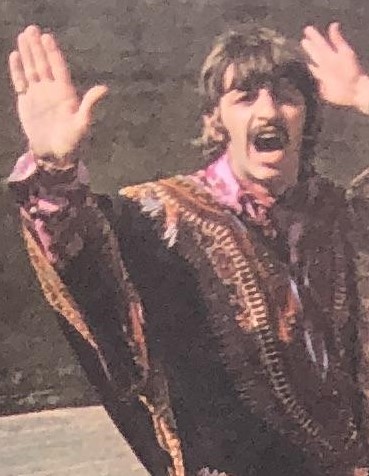 Compared to a lot of the arrangements heard on the album, “With A Little Help From My Friends” is quite simplistic, which gives you a warm and grounded feeling after the hyped up anticipatory “Sgt. Pepper” theme that precedes it. Ringo’s song consists of a ‘verse/ refrain/ verse/ refrain/ bridge/ verse/ refrain/ bridge/ refrain’ structure (which becomes ababcabcb) with an intro and conclusion added in. An instrumental section would detract from the vocal flow so it was viewed as unnecessary. Compared to a lot of the arrangements heard on the album, “With A Little Help From My Friends” is quite simplistic, which gives you a warm and grounded feeling after the hyped up anticipatory “Sgt. Pepper” theme that precedes it. Ringo’s song consists of a ‘verse/ refrain/ verse/ refrain/ bridge/ verse/ refrain/ bridge/ refrain’ structure (which becomes ababcabcb) with an intro and conclusion added in. An instrumental section would detract from the vocal flow so it was viewed as unnecessary.
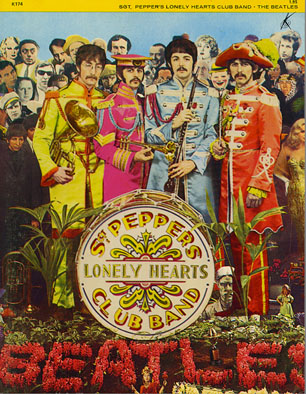 A four-measure intro begins this piece, placed here purposely to alter the key of the “Sgt. Pepper” theme to one in Ringo’s limited vocal range. While listeners have grown to view this intro as actually a part of the previous song, the recording process outlined above shows that it was always a part of the second song, this being made obvious by the track demarcation on the vinyl album as well as the compact disc. Also of interest, and to settle the issue raised above, is that the conclusion repeats the three-chord pattern heard in the intro, creating a tidy bookend effect. A four-measure intro begins this piece, placed here purposely to alter the key of the “Sgt. Pepper” theme to one in Ringo’s limited vocal range. While listeners have grown to view this intro as actually a part of the previous song, the recording process outlined above shows that it was always a part of the second song, this being made obvious by the track demarcation on the vinyl album as well as the compact disc. Also of interest, and to settle the issue raised above, is that the conclusion repeats the three-chord pattern heard in the intro, creating a tidy bookend effect.
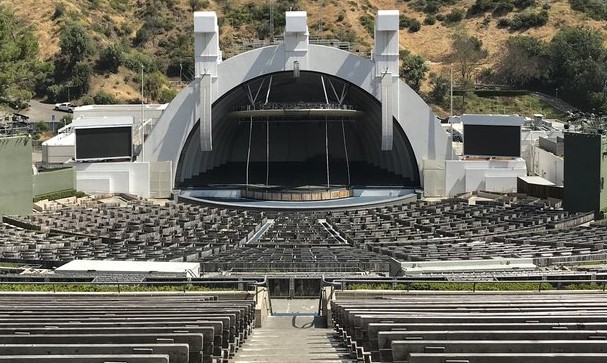 As the Hollywood Bowl Beatles fans scream, the rhythm changes subtly from the 4/4 of the “Sgt. Pepper” theme into a pulsing 6/4 pattern with a startling display of the piano / guitar / drums from the rhythm track, George Martin’s thumping organ, and the very startling three-part-harmony vocal introduction singing “Bil-ly Shears!” The instruments and vocals fade away for measures three and four of the intro to allow George Harrison’s overdubbed lead guitar phrase to welcome the applauding audience to their seats to enjoy the Star(r) attraction of the show. As the Hollywood Bowl Beatles fans scream, the rhythm changes subtly from the 4/4 of the “Sgt. Pepper” theme into a pulsing 6/4 pattern with a startling display of the piano / guitar / drums from the rhythm track, George Martin’s thumping organ, and the very startling three-part-harmony vocal introduction singing “Bil-ly Shears!” The instruments and vocals fade away for measures three and four of the intro to allow George Harrison’s overdubbed lead guitar phrase to welcome the applauding audience to their seats to enjoy the Star(r) attraction of the show.
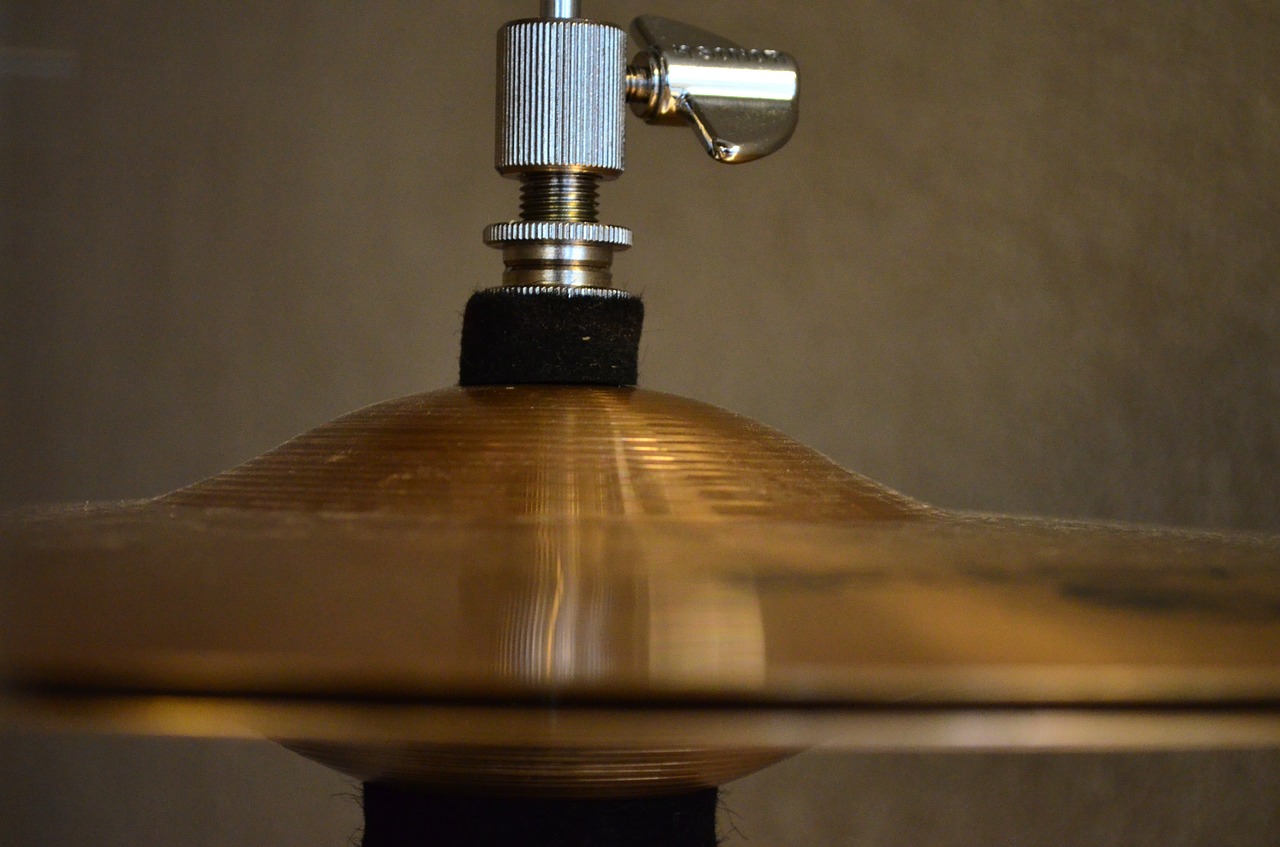 As the clapping disappears (thereby allowing the concert performance illusion to become just that – an illusion), Ringo begins his vocal performance with a very confident delivery of his melody line which was purposely constructed within a five-note range that was suitable to his ability. This eight-measure first verse instrumentally consists of guitar / piano chops on the quarter notes, bass accents on the half notes, and Ringo staying strictly on his hi-hat. The fourth measure begins Paul’s fragrant bass runs which bounce along throughout the song, the effect being that the bass guitar actually becomes the lead instrument of the song. The fifth measure brings in the rest of the drum kit to add some additional variety to this first verse which is sung single-tracked (with ADT applied) by Ringo. As the clapping disappears (thereby allowing the concert performance illusion to become just that – an illusion), Ringo begins his vocal performance with a very confident delivery of his melody line which was purposely constructed within a five-note range that was suitable to his ability. This eight-measure first verse instrumentally consists of guitar / piano chops on the quarter notes, bass accents on the half notes, and Ringo staying strictly on his hi-hat. The fourth measure begins Paul’s fragrant bass runs which bounce along throughout the song, the effect being that the bass guitar actually becomes the lead instrument of the song. The fifth measure brings in the rest of the drum kit to add some additional variety to this first verse which is sung single-tracked (with ADT applied) by Ringo.
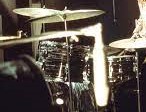 The first refrain then appears which, this time around, is eight measures in length. Two new elements now appear, these being Ringo’s overdubbed tambourine and John’s cowbell from the rhythm track. The first six measures consist of three repeated reiterations of the title of the song, altered only by the introductory words “get by,” “get high” and “gonna try.” This final line brings in harmonies from John, Paul and George, swiftly followed by a short transitional guitar phrase from George to bring in one of the very few drum solos heard on a Beatles record, this simple but fluid tom pattern filling out the seventh and eighth measures by itself. The first refrain then appears which, this time around, is eight measures in length. Two new elements now appear, these being Ringo’s overdubbed tambourine and John’s cowbell from the rhythm track. The first six measures consist of three repeated reiterations of the title of the song, altered only by the introductory words “get by,” “get high” and “gonna try.” This final line brings in harmonies from John, Paul and George, swiftly followed by a short transitional guitar phrase from George to bring in one of the very few drum solos heard on a Beatles record, this simple but fluid tom pattern filling out the seventh and eighth measures by itself.
 The second eight-measure verse then appears, which is identical instrumentally to the first verse. The difference this time around is the vocal work which divides the two phrases in half; the first half sung by Ringo and the second half sung in unison by the three other Beatles. All vocal lines are posed as questions regarding Ringo’s feeling of isolation only to be answered in the eighth measure by a simple “no.” The answer is further explained in the next refrain that follows, saying that his “friends” help him through it. This refrain also brings the tambourine and cowbell back into the picture. However, the differences this time include the harmony vocalists chiming in on all three reiterations of the title of the song with Ringo singing the opening of each phrase himself. Also, this refrain, as with the remainder of the refrains in the song, is only six measures long instead of eight. One drum solo per song is well enough! The second eight-measure verse then appears, which is identical instrumentally to the first verse. The difference this time around is the vocal work which divides the two phrases in half; the first half sung by Ringo and the second half sung in unison by the three other Beatles. All vocal lines are posed as questions regarding Ringo’s feeling of isolation only to be answered in the eighth measure by a simple “no.” The answer is further explained in the next refrain that follows, saying that his “friends” help him through it. This refrain also brings the tambourine and cowbell back into the picture. However, the differences this time include the harmony vocalists chiming in on all three reiterations of the title of the song with Ringo singing the opening of each phrase himself. Also, this refrain, as with the remainder of the refrains in the song, is only six measures long instead of eight. One drum solo per song is well enough!
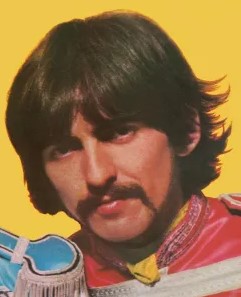 The first eight-measure bridge comes next which musically consists of the piano / guitar / drums of the rhythm track and Paul’s overdubbed bass. A question-and-answer format is heard here, the three harmonizing Beatles asking a set of questions and Ringo providing the answers. This leads to a third verse which alters somewhat from the previous ones instrumentally as Ringo finally strays from his hi-hat to his ride cymbal. This verse is also characterized by a question-and-answer format, John, Paul and George now harmonizing their questions (they sang in unison in the previous verse…remember?) while Ringo answers them. Also, listen carefully for George to botch a chord change at the end of this verse, coming in too soon on the E chord while Ringo sings “but I know it’s mine.” The first eight-measure bridge comes next which musically consists of the piano / guitar / drums of the rhythm track and Paul’s overdubbed bass. A question-and-answer format is heard here, the three harmonizing Beatles asking a set of questions and Ringo providing the answers. This leads to a third verse which alters somewhat from the previous ones instrumentally as Ringo finally strays from his hi-hat to his ride cymbal. This verse is also characterized by a question-and-answer format, John, Paul and George now harmonizing their questions (they sang in unison in the previous verse…remember?) while Ringo answers them. Also, listen carefully for George to botch a chord change at the end of this verse, coming in too soon on the E chord while Ringo sings “but I know it’s mine.”
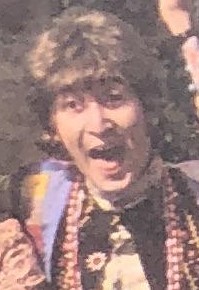 After a third refrain is heard, this one being identical in all ways to the second refrain, a near identical repeat of the bridge follows it. The only difference between this bridge and the first one is the opening notes of each melody line as sung by the three Beatles in harmony, both of their phrases begin lower as heard on the words “do you” and “could it.” After a third refrain is heard, this one being identical in all ways to the second refrain, a near identical repeat of the bridge follows it. The only difference between this bridge and the first one is the opening notes of each melody line as sung by the three Beatles in harmony, both of their phrases begin lower as heard on the words “do you” and “could it.”
 The bridge moves somewhat awkwardly into a final repeat of the refrain, which once again brings in the tambourine and cowbell along with the harmonized Beatles as the last two refrains had. One difference lyrically, this undoubtedly done because of a mistake by Ringo in his initial lead vocal track, was the switching of the order of the phrases “gonna try” and “get high.” The bridge moves somewhat awkwardly into a final repeat of the refrain, which once again brings in the tambourine and cowbell along with the harmonized Beatles as the last two refrains had. One difference lyrically, this undoubtedly done because of a mistake by Ringo in his initial lead vocal track, was the switching of the order of the phrases “gonna try” and “get high.”
 Then, with a slightly noticeable edit on the lead vocal track (an overlapped voice appears at close listening), the five-measure conclusion of the song is now heard. The D and A chords are sustained by the piano, guitar and bass in the first two measures to allow Ringo to rapidly sing two low-note repeats of the song’s title while the drums and tambourine keep the rhythm going. Ringo’s final note “friends” then jumps a full octave, breaking his five-note melody line for the only time in the entire song, while his friends harmonize a descending “aah” counter melody behind him. The chords of the introduction are repeated during these third and fourth measures, the fifth measure consisting of a satisfying landing on the home chord with Ringo’s sizzling cymbal standing out as the instruments sustain. No crowd applause is needed. Then, with a slightly noticeable edit on the lead vocal track (an overlapped voice appears at close listening), the five-measure conclusion of the song is now heard. The D and A chords are sustained by the piano, guitar and bass in the first two measures to allow Ringo to rapidly sing two low-note repeats of the song’s title while the drums and tambourine keep the rhythm going. Ringo’s final note “friends” then jumps a full octave, breaking his five-note melody line for the only time in the entire song, while his friends harmonize a descending “aah” counter melody behind him. The chords of the introduction are repeated during these third and fourth measures, the fifth measure consisting of a satisfying landing on the home chord with Ringo’s sizzling cymbal standing out as the instruments sustain. No crowd applause is needed.
 Ringo, of course, is truly center stage on this song (literally, if you continue the premise of him being Billy Shears) with his doleful yet charming vocal delivery. While some cracking and off-key vocals are heard in his previous Beatles offerings, this one comes off with hardly an imperfection. Ringo can also be counted on for his precise percussion delivery, especially noticeable in his labored 6/4 timing of his tambourine playing, which isn’t easy to do. Ringo, of course, is truly center stage on this song (literally, if you continue the premise of him being Billy Shears) with his doleful yet charming vocal delivery. While some cracking and off-key vocals are heard in his previous Beatles offerings, this one comes off with hardly an imperfection. Ringo can also be counted on for his precise percussion delivery, especially noticeable in his labored 6/4 timing of his tambourine playing, which isn’t easy to do.
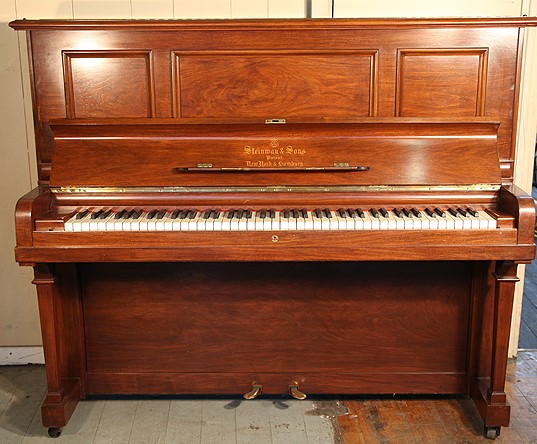 McCartney’s piano from the rhythm track may not be too discernable, but his bass playing definitely is. His bass performance on this song is easily cited by many as a prime example of how he pioneered the instrument in popular music. He, as well as Lennon and Harrison, delivered a finely laid-out background / harmony vocal performance, while George made himself up to the task in working up some nice guitar phrases for strategic parts of the song. And we all know John plays a mean cowbell! McCartney’s piano from the rhythm track may not be too discernable, but his bass playing definitely is. His bass performance on this song is easily cited by many as a prime example of how he pioneered the instrument in popular music. He, as well as Lennon and Harrison, delivered a finely laid-out background / harmony vocal performance, while George made himself up to the task in working up some nice guitar phrases for strategic parts of the song. And we all know John plays a mean cowbell!
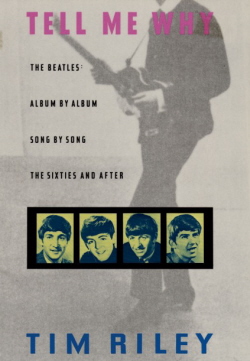 In spite of having just been introduced as the ultra-popular icon “Billy Shears,” the lyrics couldn’t be more appropriate for Ringo. Admitting that he could possibly sing “out of tune” and hoping the audience wouldn’t “walk out” on him, is his “most self-revealing moment as a Beatle,” as Tim Riley puts it in his book “Tell Me Why.” He humbly tells us that he’ll “try not to sing out of key” while nodding that he is where he is only because of encouragement from his “friends.” In spite of having just been introduced as the ultra-popular icon “Billy Shears,” the lyrics couldn’t be more appropriate for Ringo. Admitting that he could possibly sing “out of tune” and hoping the audience wouldn’t “walk out” on him, is his “most self-revealing moment as a Beatle,” as Tim Riley puts it in his book “Tell Me Why.” He humbly tells us that he’ll “try not to sing out of key” while nodding that he is where he is only because of encouragement from his “friends.”
 The lyrics then shift to the subject matter of loneliness and isolation due to his “love” being away. “Does it worry you to be alone?” his friends ask. His answer to their questions about being “sad because you’re on your own” is “no, I get by with a little help from my friends,” not to mention them supplying him with some drugs to “get high” and not have to think about being so lonely. The lyrics then shift to the subject matter of loneliness and isolation due to his “love” being away. “Does it worry you to be alone?” his friends ask. His answer to their questions about being “sad because you’re on your own” is “no, I get by with a little help from my friends,” not to mention them supplying him with some drugs to “get high” and not have to think about being so lonely.
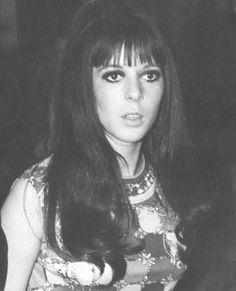 His friends would even find him a substitute for his “love” (his wife Maureen) while she’s "away," them asking “do you need anybody…could it be anybody?” While love songs have become somewhat passé in the Lennon / McCartney catalog at this point in their career, this composition is a return to the formula with Ringo singing “I just need someone to love.” His friends would even find him a substitute for his “love” (his wife Maureen) while she’s "away," them asking “do you need anybody…could it be anybody?” While love songs have become somewhat passé in the Lennon / McCartney catalog at this point in their career, this composition is a return to the formula with Ringo singing “I just need someone to love.”
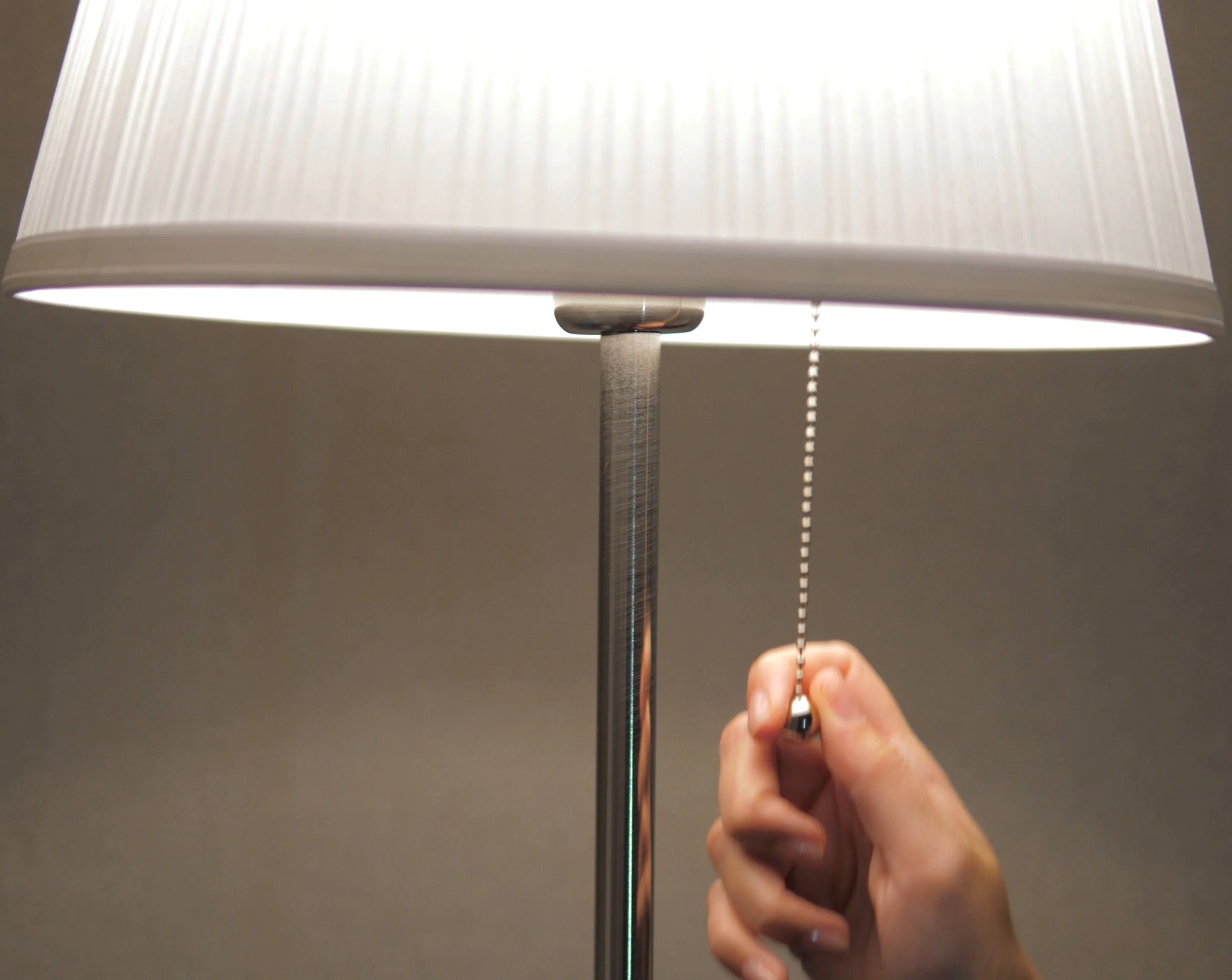 After Ringo acknowledges the possibility of “love at first sight,” he's asked the heady question, “What do you see when you turn out the light?,” thus breaking the subject matter, as does his answer “I can’t tell you, but I know it’s mine.” Only the listeners who are “tuned in” (or "obscene") get this one. After Ringo acknowledges the possibility of “love at first sight,” he's asked the heady question, “What do you see when you turn out the light?,” thus breaking the subject matter, as does his answer “I can’t tell you, but I know it’s mine.” Only the listeners who are “tuned in” (or "obscene") get this one.
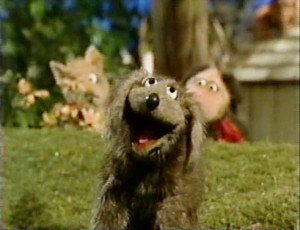 Of course, the overall message is one of simplicity – how friends can be relied upon when we need them. The obvious sentiment is even picked up on with the Sesame Street version where a dog sings about being left all alone in the yard. It’s OK because he “gets by with a little yelp from his friends”…the other dogs in the neighborhood, that is. Of course, the overall message is one of simplicity – how friends can be relied upon when we need them. The obvious sentiment is even picked up on with the Sesame Street version where a dog sings about being left all alone in the yard. It’s OK because he “gets by with a little yelp from his friends”…the other dogs in the neighborhood, that is.
American Releases
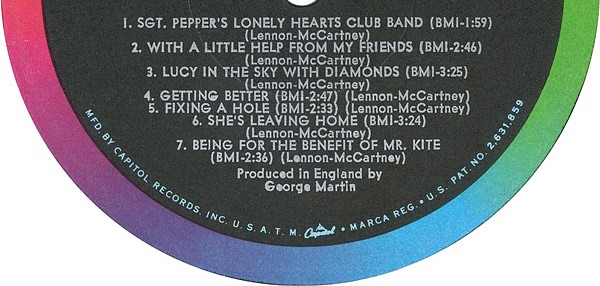 On June 2nd, 1967, Capitol released the album “Sgt. Pepper’s Lonely Hearts Club Band” which featured “With A Little Help From My Friends” as its second song. Never before had a Ringo vocal track been positioned so early on a Beatles album, this occurrence being done because of its pivotal role in introducing the “Sgt. Pepper” concept for the album. This album has been reissued in the US on vinyl continuously through the years. On June 2nd, 1967, Capitol released the album “Sgt. Pepper’s Lonely Hearts Club Band” which featured “With A Little Help From My Friends” as its second song. Never before had a Ringo vocal track been positioned so early on a Beatles album, this occurrence being done because of its pivotal role in introducing the “Sgt. Pepper” concept for the album. This album has been reissued in the US on vinyl continuously through the years.
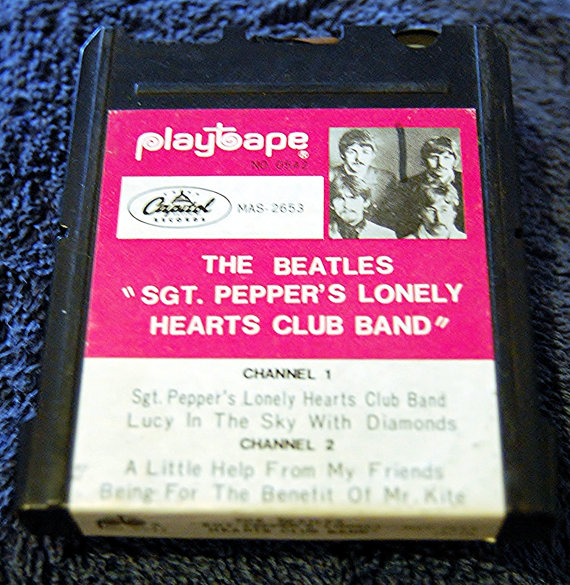 Sometime in 1967, Capitol released Beatles music on a short-lived format called "Playtapes." These tapes did not have the capability to include entire albums, so a four-song version of the "Sgt. Pepper" album was released in this portable format with this track, listed simply as "A Little Help From My Friends," being one of four songs on this release. These original "Playtapes" are rare and very collectable today. Sometime in 1967, Capitol released Beatles music on a short-lived format called "Playtapes." These tapes did not have the capability to include entire albums, so a four-song version of the "Sgt. Pepper" album was released in this portable format with this track, listed simply as "A Little Help From My Friends," being one of four songs on this release. These original "Playtapes" are rare and very collectable today.
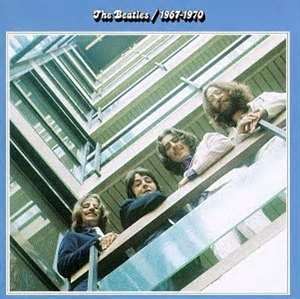 On April 2nd, 1973, two double-album compilations were released in the US, the second of them titled “The Beatles/1967-1970” (aka “The Blue Album”). This set featured the naturally segued “Sgt. Pepper” theme into “With A Little Help From My Friends” as heard on the original album. It was first released on compact disc on September 20th, 1993 and then was re-released as a remastered set on August 10th, 2010. On April 2nd, 1973, two double-album compilations were released in the US, the second of them titled “The Beatles/1967-1970” (aka “The Blue Album”). This set featured the naturally segued “Sgt. Pepper” theme into “With A Little Help From My Friends” as heard on the original album. It was first released on compact disc on September 20th, 1993 and then was re-released as a remastered set on August 10th, 2010.
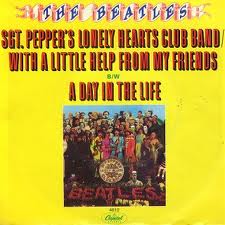 The first time this song was released as a single by The Beatles wasn’t until August 14th, 1978 as a dual a-side with the “Sgt. Pepper” theme. This was an attempt from Capitol at following up the success of the top ten hit “Got To Get You Into My Life” from 1976. However, it only received enough radio airplay and sales to make it up to #71 on the Billboard Hot 100. Since this single also came out in Britain in September of 1978 (peaking at #63), it was included in the vinyl box set "The Beatles Singles Collection" that was released worldwide on December 6th, 1982. This single was dropped, however, when the box set was reissued in 1992 and 2019. The first time this song was released as a single by The Beatles wasn’t until August 14th, 1978 as a dual a-side with the “Sgt. Pepper” theme. This was an attempt from Capitol at following up the success of the top ten hit “Got To Get You Into My Life” from 1976. However, it only received enough radio airplay and sales to make it up to #71 on the Billboard Hot 100. Since this single also came out in Britain in September of 1978 (peaking at #63), it was included in the vinyl box set "The Beatles Singles Collection" that was released worldwide on December 6th, 1982. This single was dropped, however, when the box set was reissued in 1992 and 2019.
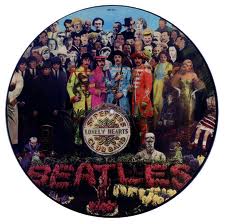 Simultaneous to the release of the above mentioned single (August 14th, 1978) was a unique picture disc version of the “Sgt. Pepper” album which attracted a lot of attention to the classic album, many Beatles collectors snatching them up to hang on their walls and/or keep as collectors’ items. Then, on December 15th, 2017, Capitol re-released the album as a picture disc on 180 Gram vinyl utilizing the new Giles Martin stereo mix, this once again being a limited edition release. Simultaneous to the release of the above mentioned single (August 14th, 1978) was a unique picture disc version of the “Sgt. Pepper” album which attracted a lot of attention to the classic album, many Beatles collectors snatching them up to hang on their walls and/or keep as collectors’ items. Then, on December 15th, 2017, Capitol re-released the album as a picture disc on 180 Gram vinyl utilizing the new Giles Martin stereo mix, this once again being a limited edition release.
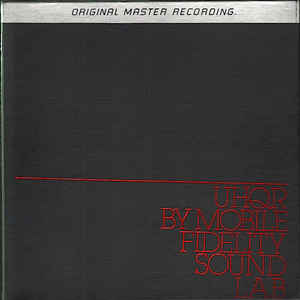 Two interesting American vinyl reissues of the “Sgt. Pepper” album were released as "Original Master Recording" editions produced through Mobile Fidelity Sound Lab. The first edition released in September of 1982 (with matrix # UHQR "Ultra High Quality Recording" 1-100) listed for $40 per copy, which was more than five times the cost of the standard version, and was limited to 5000 sequentially numbered copies that weighed 200 grams (about double the weight of conventional vinyl at that time) and were packaged between layers of protective foam rubber in a thick box. The second edition from Mobile Fidelity Sound Lab was released in June of 1983 similar to the rest of the Beatles catalog released within their series. Both of these were prepared utilizing half-speed mastering technology from the original master tape on loan from EMI. These versions of “Sgt. Pepper” were only available for a short time and are quite collectible today. Two interesting American vinyl reissues of the “Sgt. Pepper” album were released as "Original Master Recording" editions produced through Mobile Fidelity Sound Lab. The first edition released in September of 1982 (with matrix # UHQR "Ultra High Quality Recording" 1-100) listed for $40 per copy, which was more than five times the cost of the standard version, and was limited to 5000 sequentially numbered copies that weighed 200 grams (about double the weight of conventional vinyl at that time) and were packaged between layers of protective foam rubber in a thick box. The second edition from Mobile Fidelity Sound Lab was released in June of 1983 similar to the rest of the Beatles catalog released within their series. Both of these were prepared utilizing half-speed mastering technology from the original master tape on loan from EMI. These versions of “Sgt. Pepper” were only available for a short time and are quite collectible today.
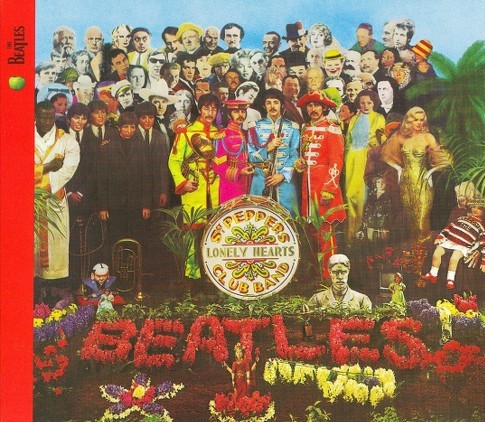 The first CD release of the “Sgt. Pepper” album was on September 21st, 1987, this celebrated release containing an impressive booklet with many interesting facts about the album, including a list of the faces on the front cover. American audiences may have been surprised to hear the high pitched dog whistle and “inner groove” on this CD that was omitted from the original US vinyl release. This compact disc was then remastered and re-released on September 9th, 2009, this album becoming a popular "must have" yet again. The first CD release of the “Sgt. Pepper” album was on September 21st, 1987, this celebrated release containing an impressive booklet with many interesting facts about the album, including a list of the faces on the front cover. American audiences may have been surprised to hear the high pitched dog whistle and “inner groove” on this CD that was omitted from the original US vinyl release. This compact disc was then remastered and re-released on September 9th, 2009, this album becoming a popular "must have" yet again.
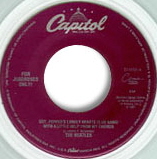 In January of 1994, the 1978 single was re-released by Capitol on their Cema “For Jukeboxes Only” series, this time on clear vinyl, which is quite the find today. In January of 1994, the 1978 single was re-released by Capitol on their Cema “For Jukeboxes Only” series, this time on clear vinyl, which is quite the find today.
September 13th, 1999 was the release date for the LP “Yellow Submarine Songtrack,” the new 1998 mix of “With A Little Help From My Friends” detailed above being included therein. Its inclusion on this album is due to the fact that a small portion of the song is heard in the movie, which was re-released in theaters and on VHS and DVD at this time.
 Then, on September 9th, 2009, the remastered mono mix of the song appeared in the CD box set “The Beatles in Mono,” the vinyl edition being released on September 9th, 2014 Many Beatles enthusiasts purchased this pricey box set primarily to witness the mono “Sgt. Pepper” album in its entirety, being that most American Beatles fans had never heard it before. Then, on September 9th, 2009, the remastered mono mix of the song appeared in the CD box set “The Beatles in Mono,” the vinyl edition being released on September 9th, 2014 Many Beatles enthusiasts purchased this pricey box set primarily to witness the mono “Sgt. Pepper” album in its entirety, being that most American Beatles fans had never heard it before.
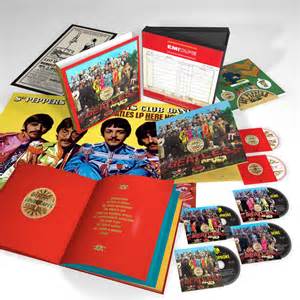 On May 26th, 2017, a brand new stereo mix of the "Sgt. Pepper" album, created with the original mono mix as a template, was released. Created by George Martin's son Giles Martin and engineer Sam Okell, this vibrant new version of "With A Little Help From My Friends" really brings Ringo's drum work to the fore, as well as making the rest of its elements sparkle with clarity. Both the "2 CD Anniversary Edition" and the "Super Deluxe Edition" box set also contain the original "take one" and "take two" as bonus tracks as well. On May 26th, 2017, a brand new stereo mix of the "Sgt. Pepper" album, created with the original mono mix as a template, was released. Created by George Martin's son Giles Martin and engineer Sam Okell, this vibrant new version of "With A Little Help From My Friends" really brings Ringo's drum work to the fore, as well as making the rest of its elements sparkle with clarity. Both the "2 CD Anniversary Edition" and the "Super Deluxe Edition" box set also contain the original "take one" and "take two" as bonus tracks as well.
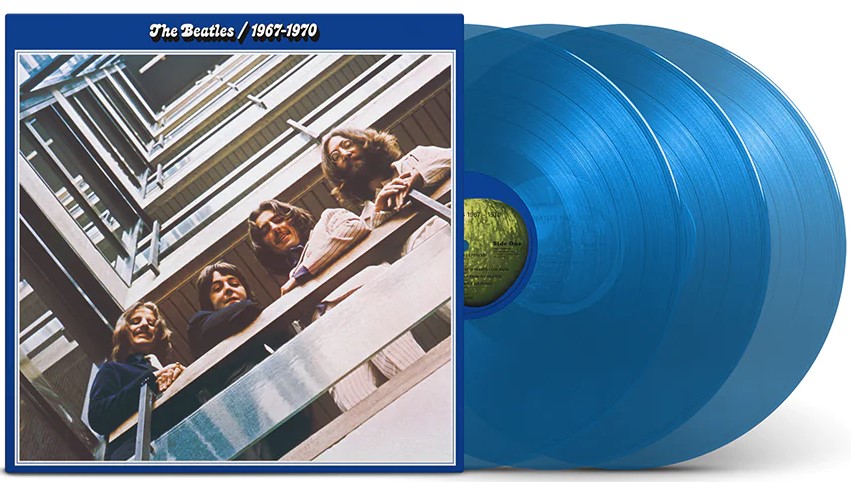 A new 50th Anniversay edition of the compilation album "The Beatles / 1967 - 1970" ("The Blue Album") was released on November 10th, 2023, the Giles Martin stereo mix of "With A Little Help From My Friends" being included. This expanded release included 12 additional songs for a total of 38 tracks, and was made available as a double CD and as a triple vinyl release on both black and blue vinyl. A new 50th Anniversay edition of the compilation album "The Beatles / 1967 - 1970" ("The Blue Album") was released on November 10th, 2023, the Giles Martin stereo mix of "With A Little Help From My Friends" being included. This expanded release included 12 additional songs for a total of 38 tracks, and was made available as a double CD and as a triple vinyl release on both black and blue vinyl.
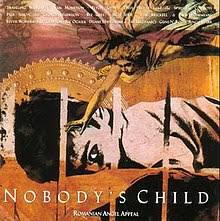 The first live Ringo Starr version to be released was on July 24th, 1990, this being the benefit album "Nobody's Child: Romanian Angel Appeal," which was a charity organized by George's wife Olivia Harrison in order to raise money for Romanian orphans. Ringo's live version of "With A Little Help Of My Friends" appeared on this album as well as the b-side to a single from it. The next live version of the song was included on the album “Live In Montreux,” which was released on September 13th, 1993, this same version being re-released on the EP "4-Starr Collection" which was released sometime in 1995. The first live Ringo Starr version to be released was on July 24th, 1990, this being the benefit album "Nobody's Child: Romanian Angel Appeal," which was a charity organized by George's wife Olivia Harrison in order to raise money for Romanian orphans. Ringo's live version of "With A Little Help Of My Friends" appeared on this album as well as the b-side to a single from it. The next live version of the song was included on the album “Live In Montreux,” which was released on September 13th, 1993, this same version being re-released on the EP "4-Starr Collection" which was released sometime in 1995.
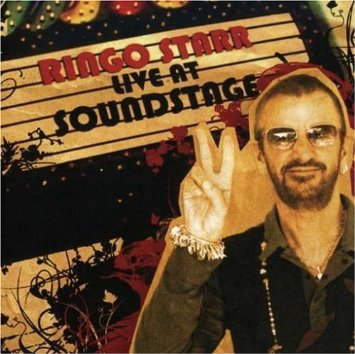 Then came “VH1 Storytellers,” released on October 19th, 1998, followed by “King Biscuit Flower Hour Presents,” released on August 6th, 2002. The exact performance from this album also appeared on the June 1st, 2003 release, “Extended Versions” and also the August 15th, 2006 released LP “Ringo Starr And Friends.” A newer recording of the song appeared on the March 23rd, 2004 album “Tour 2003,” and then a later performance of the song appeared on the “Live At Soundstage” album, released on October 23rd, 2007. The July 7th, 2008 released album “Live 2006” featured a newly recorded live version of the song, as did the July 27th, 2010 released LP “Live At The Greek Theatre 2008." The song was also included in the 2CD set "Live At The Greek Theatre 2019," which was released on November 25th, 2022, this also being released on on 2CD/Blu-Ray set that same day. Then came “VH1 Storytellers,” released on October 19th, 1998, followed by “King Biscuit Flower Hour Presents,” released on August 6th, 2002. The exact performance from this album also appeared on the June 1st, 2003 release, “Extended Versions” and also the August 15th, 2006 released LP “Ringo Starr And Friends.” A newer recording of the song appeared on the March 23rd, 2004 album “Tour 2003,” and then a later performance of the song appeared on the “Live At Soundstage” album, released on October 23rd, 2007. The July 7th, 2008 released album “Live 2006” featured a newly recorded live version of the song, as did the July 27th, 2010 released LP “Live At The Greek Theatre 2008." The song was also included in the 2CD set "Live At The Greek Theatre 2019," which was released on November 25th, 2022, this also being released on on 2CD/Blu-Ray set that same day.
Live Performances
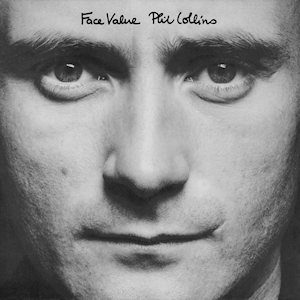 June 7th, 1987 was the first date that “With A Little Help From My Friends” was performed live by a Beatle…or should I say Beatles. This was the date for the 1987 Prince’s Trust Rock Gala at Wembley Arena in London. This amazing star-studded performance included George Harrison, Ringo Starr, Eric Clapton, Ben E. King, Elton John, Phil Collins, Jeff Lynne and many others. After he was introduced by Eric Clapton, Ringo sprinted to the microphone in center stage during the “Billy Shears” fanfare, arriving just in time to begin singing the first verse. June 7th, 1987 was the first date that “With A Little Help From My Friends” was performed live by a Beatle…or should I say Beatles. This was the date for the 1987 Prince’s Trust Rock Gala at Wembley Arena in London. This amazing star-studded performance included George Harrison, Ringo Starr, Eric Clapton, Ben E. King, Elton John, Phil Collins, Jeff Lynne and many others. After he was introduced by Eric Clapton, Ringo sprinted to the microphone in center stage during the “Billy Shears” fanfare, arriving just in time to begin singing the first verse.
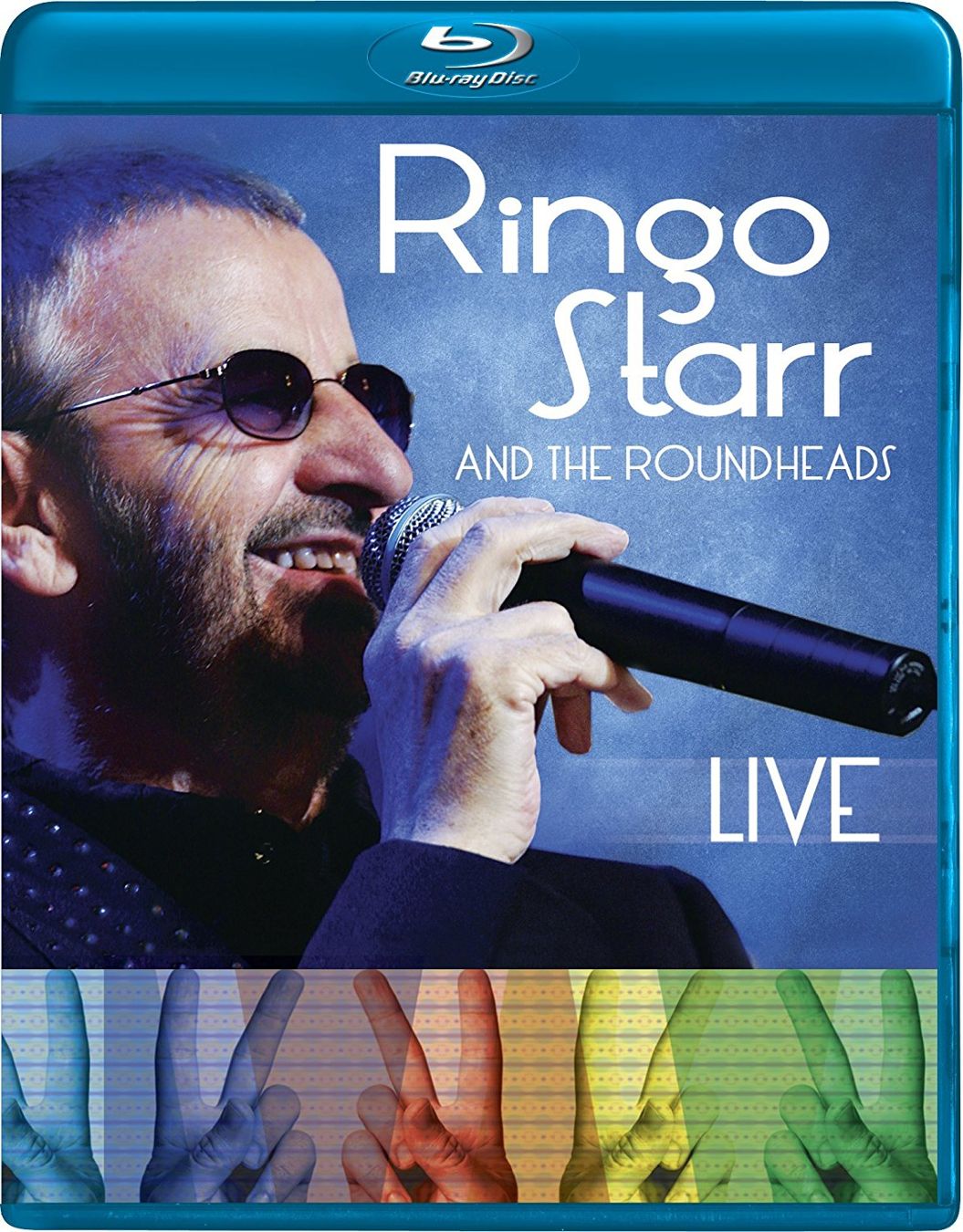 Thereafter, Ringo and his many incarnations of his “All-Starr Band” have included the famous song on every tour and show they’ve performed since they began in 1989. He also included the song during his concert tours with his group “The Roundheads” in 2005. Thereafter, Ringo and his many incarnations of his “All-Starr Band” have included the famous song on every tour and show they’ve performed since they began in 1989. He also included the song during his concert tours with his group “The Roundheads” in 2005.
Paul and Ringo have also teamed up live to perform the song as well. On April 4th, 2009, they appeared live at Radio City Music Hall in New York City for a David Lynch benefit to encourage education in Transcendental Meditation in public schools. Paul introduced Ringo who then both huddled around the main microphone to perform a rousing rendition of the song. Then, on January 27th, 2014, at the Los Angeles Convention Center, Paul's band played the "Sgt. Pepper" theme song which prompted Ringo to run out and sing "With A Little Help From My Friends." This performance was part of the 50th Anniversary of The Beatles' first appearance on The Ed Sullivan Show, which was broadcast on CBS on February 9th, 2014. Then, after Paul inducted him into the Rock And Roll Hall Of Fame at Cleveland Public Hall on April 19th, 2015, the two Beatles performed "With A Little Help Of My Friends" before an excited crowd.
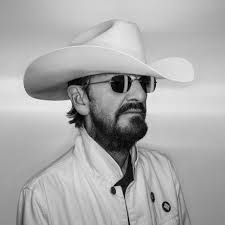 Then on January 14th and 15th, 2025, Ringo performed the song at the Ryman Auditorium in Nashville, Tennessee for the CBS television special "Ringo & Friends At The Ryman," which was broadcast on March 10th, 2025. Ringo sang this song stage front with various musical celebrities, such as Jack White, Sheryl Crow, Brenda Lee, Rodney Crowell, Molly Tuttle, Larkin Poe and the legendary Jim Keltner on drums. This US television special was in celebration of Ringo's current country album "Look Up." Then on January 14th and 15th, 2025, Ringo performed the song at the Ryman Auditorium in Nashville, Tennessee for the CBS television special "Ringo & Friends At The Ryman," which was broadcast on March 10th, 2025. Ringo sang this song stage front with various musical celebrities, such as Jack White, Sheryl Crow, Brenda Lee, Rodney Crowell, Molly Tuttle, Larkin Poe and the legendary Jim Keltner on drums. This US television special was in celebration of Ringo's current country album "Look Up."
Conclusion
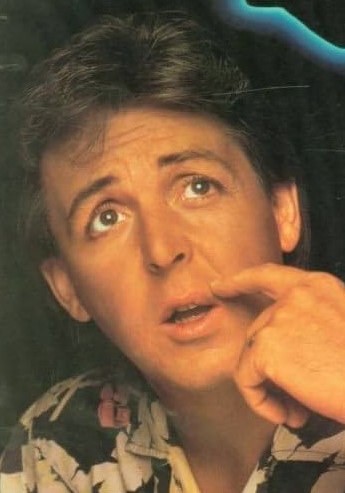 “It’s a catchy tune, but until it was pointed out to me, I never realized that the ‘friends’ were assorted drugs with such nicknames as ‘Mary Jane,’ ‘Speed’ and ‘Benny.’” This quote from a speech by Vice-President Spiro Agnew in Las Vegas on September 4th, 1970 supposedly blew the whistle on the actual meaning of this popular song. He informed his audience that the music of the day was presenting drug use in “such an attractive light that, for the impressionable, ‘turning on’ becomes the natural and even the approved thing to do.” As Paul mentioned above, quoting from his book "The Lyrics," this speech was taken seriously enough that the FCC created a pamphlet detailing a list of popular songs that radio stations dare not play if they wanted to keep their licenses. Such a big to-do over a last minute inclusion for the “Sgt. Pepper” album. “It’s a catchy tune, but until it was pointed out to me, I never realized that the ‘friends’ were assorted drugs with such nicknames as ‘Mary Jane,’ ‘Speed’ and ‘Benny.’” This quote from a speech by Vice-President Spiro Agnew in Las Vegas on September 4th, 1970 supposedly blew the whistle on the actual meaning of this popular song. He informed his audience that the music of the day was presenting drug use in “such an attractive light that, for the impressionable, ‘turning on’ becomes the natural and even the approved thing to do.” As Paul mentioned above, quoting from his book "The Lyrics," this speech was taken seriously enough that the FCC created a pamphlet detailing a list of popular songs that radio stations dare not play if they wanted to keep their licenses. Such a big to-do over a last minute inclusion for the “Sgt. Pepper” album.
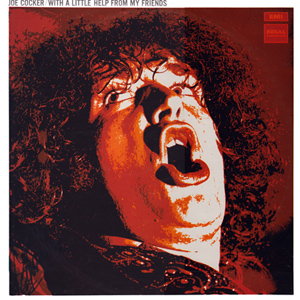 “It’s really about a little help from my friends, it’s a sincere message,” John Lennon stated in defense of the drug related accusations. In any event, even though the song did make the subversive list put together in the US at the time, it certainly didn’t hurt its reputation over the years. One has to laugh about the situation now as we hear the song in our local supermarket or elevator, not to mention the blistering interpretation by Joe Cocker being the theme song to the youth-oriented television show "The Wonder Years." "When Joe Cocker did this song one year later, he took it to places nobody had imagined," Paul related in his book "The Lyrics." "I knew he was going to cover it, but I didn't kinow he would do this radical arrangement of slowing it down, because ours had been quite jaunty...It was made even more famous by John Belushi as Joe Cocker (on 'Saturday Night Live'). He did it slapstick and fell down. It was very funny." “It’s really about a little help from my friends, it’s a sincere message,” John Lennon stated in defense of the drug related accusations. In any event, even though the song did make the subversive list put together in the US at the time, it certainly didn’t hurt its reputation over the years. One has to laugh about the situation now as we hear the song in our local supermarket or elevator, not to mention the blistering interpretation by Joe Cocker being the theme song to the youth-oriented television show "The Wonder Years." "When Joe Cocker did this song one year later, he took it to places nobody had imagined," Paul related in his book "The Lyrics." "I knew he was going to cover it, but I didn't kinow he would do this radical arrangement of slowing it down, because ours had been quite jaunty...It was made even more famous by John Belushi as Joe Cocker (on 'Saturday Night Live'). He did it slapstick and fell down. It was very funny."
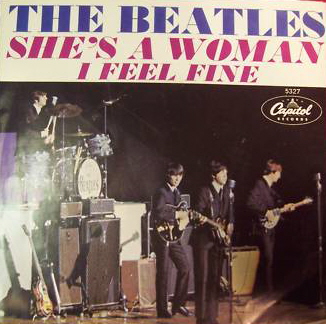 It wasn't only in the US that the song was singled out for encouraging drug use. When the "Sgt Pepper" album was eventually released in South Asia, Hong Kong and Malaysia, they omitted the song and replaced it with "The Fool On The Hill," not to mention that many radio stations in their home country of Great Britain refused to play it. Despite the slight drug reference, something The Beatles had been doing since they mentioned “turn me on” in 1964’s “She’s A Woman,” "With A Little Help From My Friends" can easily be admired for its charm. “At once communal and personal, it’s a song of comfort,” says Ian MacDonald in his book “Revolution In the Head.” “It was meant as a gesture of inclusivity: everyone could join in.” It wasn't only in the US that the song was singled out for encouraging drug use. When the "Sgt Pepper" album was eventually released in South Asia, Hong Kong and Malaysia, they omitted the song and replaced it with "The Fool On The Hill," not to mention that many radio stations in their home country of Great Britain refused to play it. Despite the slight drug reference, something The Beatles had been doing since they mentioned “turn me on” in 1964’s “She’s A Woman,” "With A Little Help From My Friends" can easily be admired for its charm. “At once communal and personal, it’s a song of comfort,” says Ian MacDonald in his book “Revolution In the Head.” “It was meant as a gesture of inclusivity: everyone could join in.”
Song Summary
“With A Little Help From My Friends”
Written by: John Lennon / Paul McCartney
-
Song Written: March 28 & 29, 1967
-
Song Recorded: March 29 & 30, April 6 & 7, 1967
-
First US Release Date: June 2, 1967
-
-
US Single Release: Capitol #4612
-
Highest Chart Position: #71
-
-
Length: 2:47 (mono), 2:46 (stereo)
-
Key: E major
-
Producer: George Martin
-
Engineers: Geoff Emerick, Richard Lush
Instrumentation (most likely):
-
Ringo Starr – Lead Vocals, Drums (1964 Ludwig Super Classic Black Oyster Pearl), tambourine
-
Paul McCartney - Piano (1905 Steinway Vertegrand),Bass Guitar (1964 Rickenbacker 4001S), Harmony Vocals
-
George Harrison – Lead and Rhythm Guitar (1961 Sonic Blue Fender Stratocaster), Harmony Vocals
-
John Lennon - Cowbell, Harmony Vocals
-
George Martin - Organ (Hammond RT-3)
Written and compiled by Dave Rybaczewski
|
IF YOU WOULD LIKE TO MAKE A DONATION TO KEEP THIS WEBSITE UP AND RUNNING, PLEASE CLICK BELOW!
Sign Up Below for our MONTHLY BEATLES TRIVIA QUIZ!
|